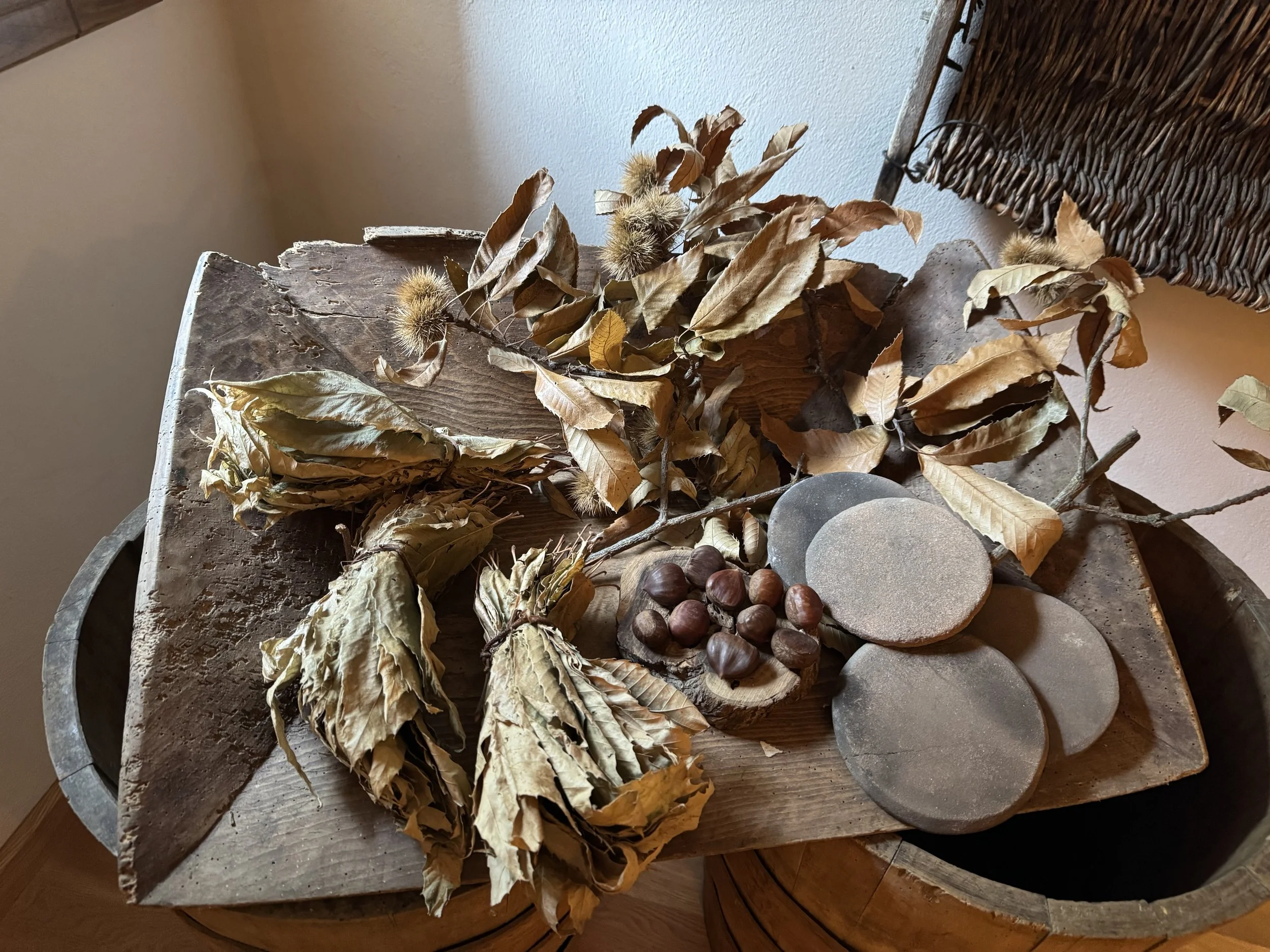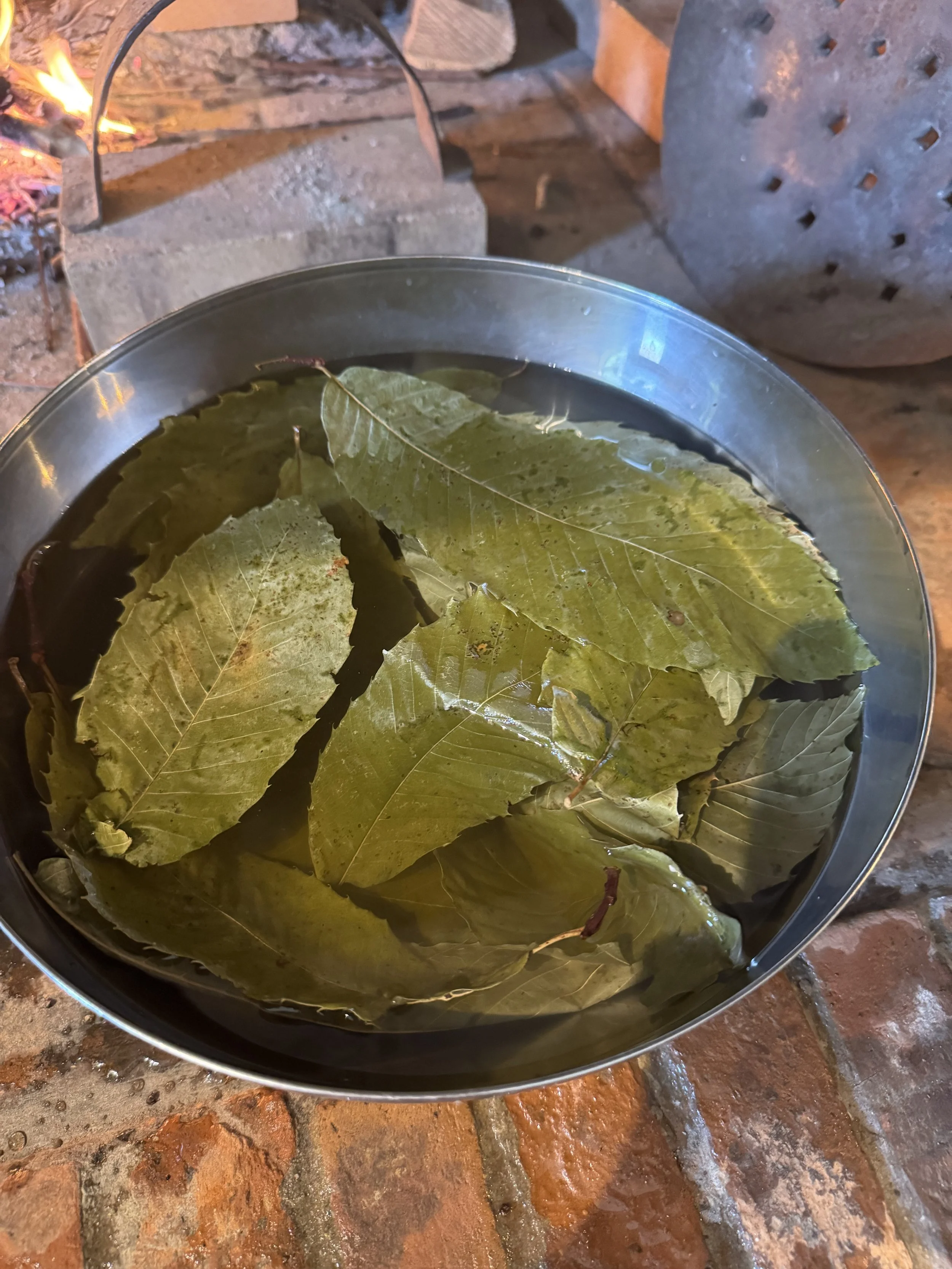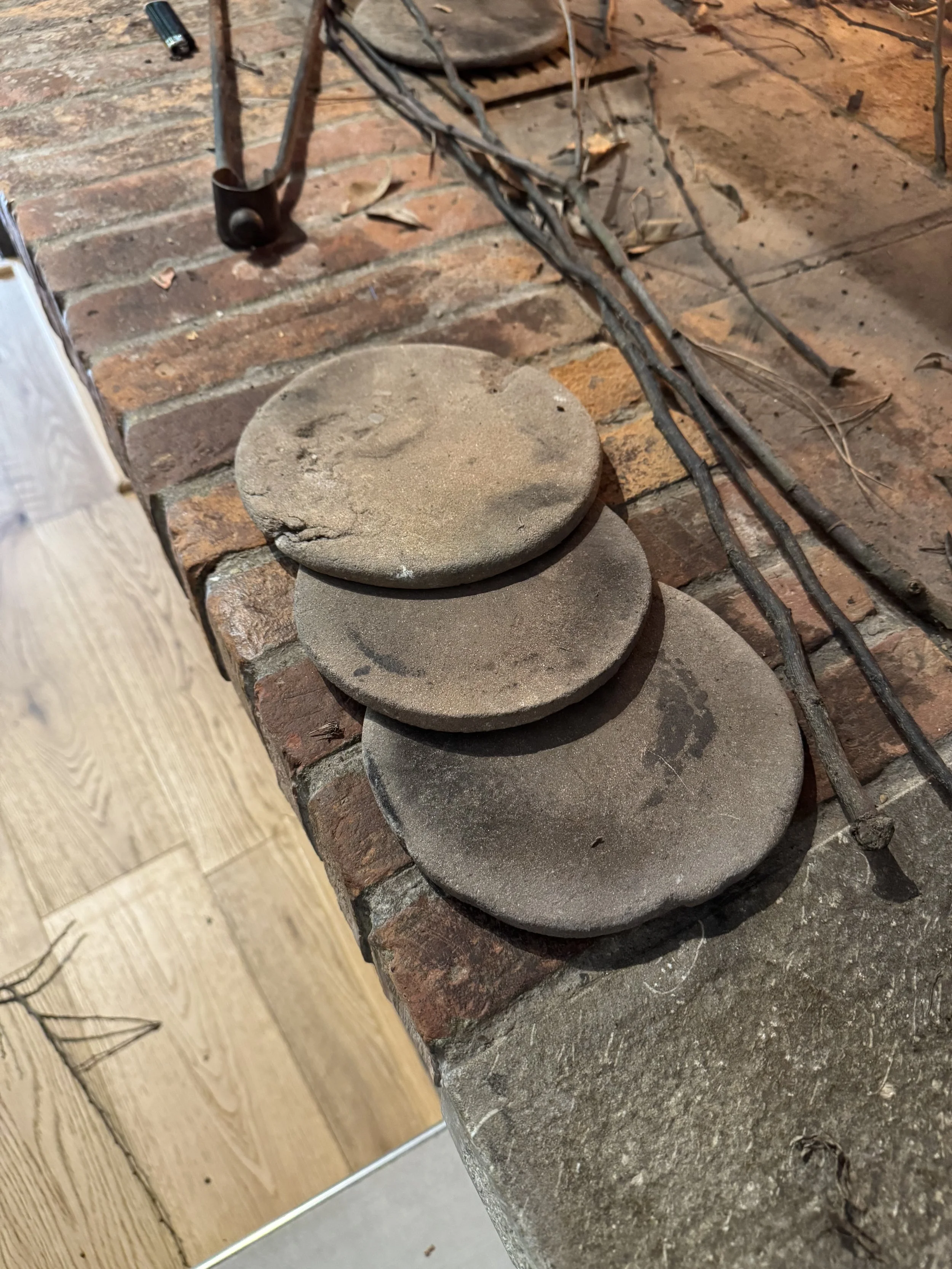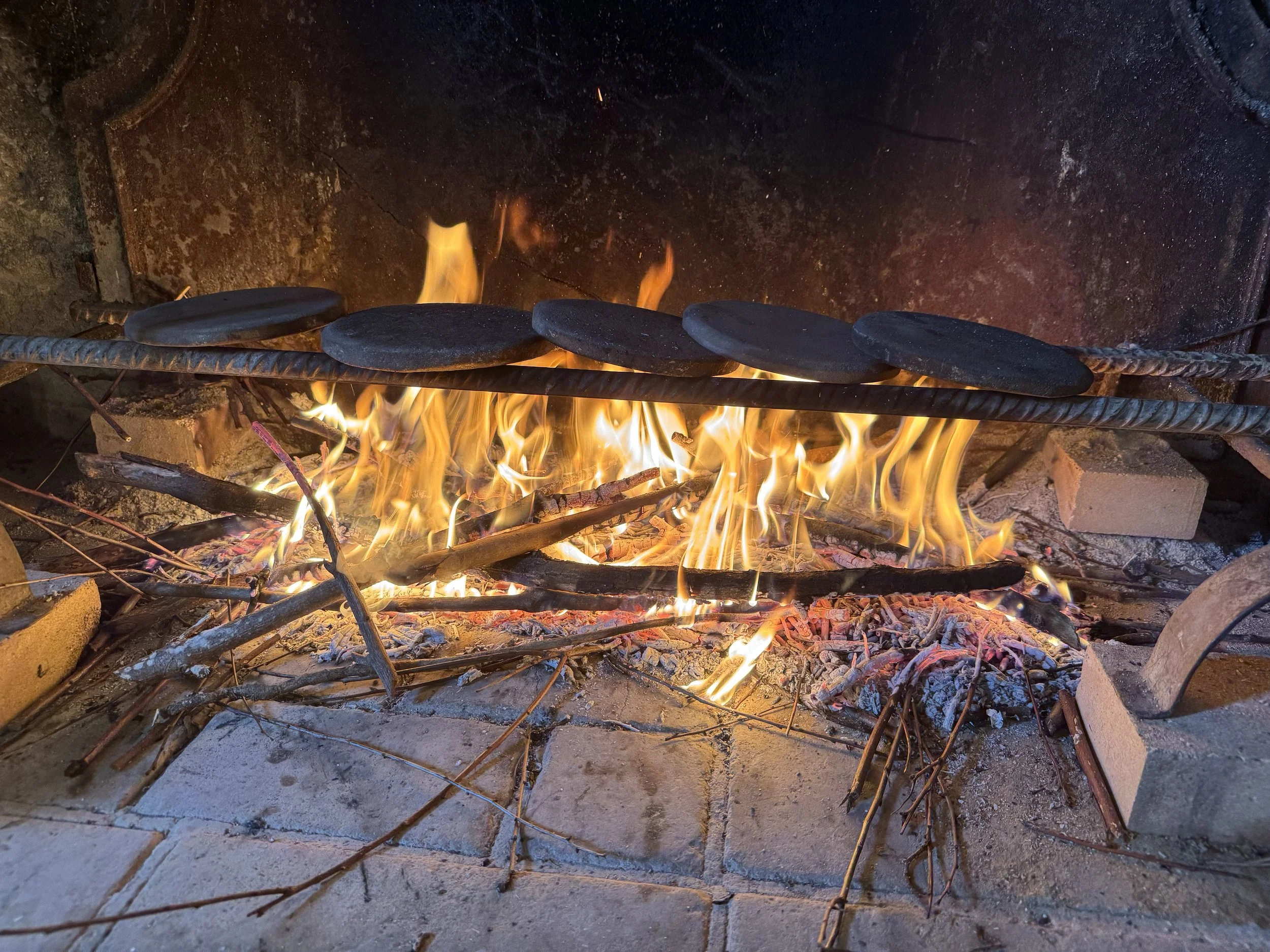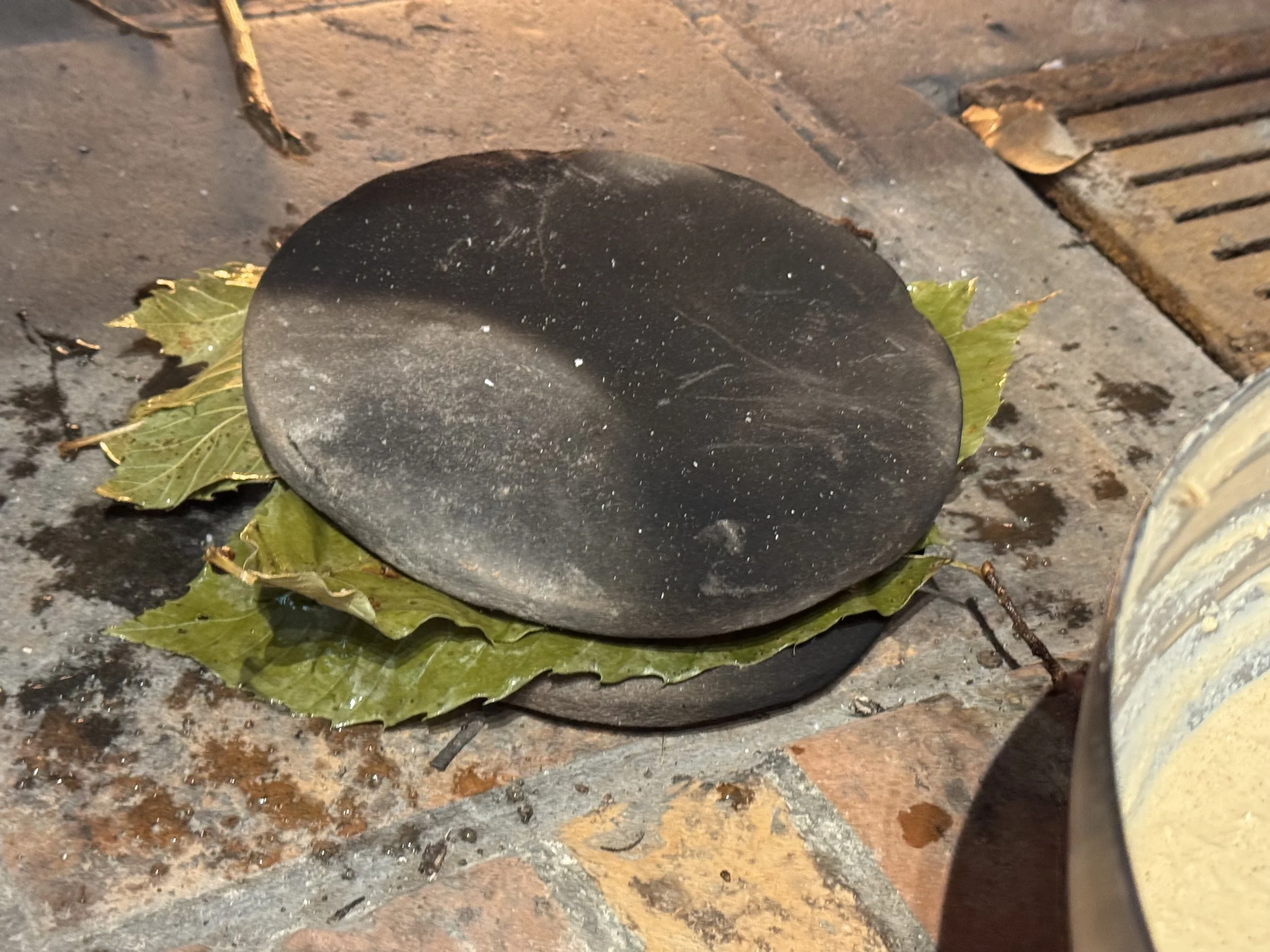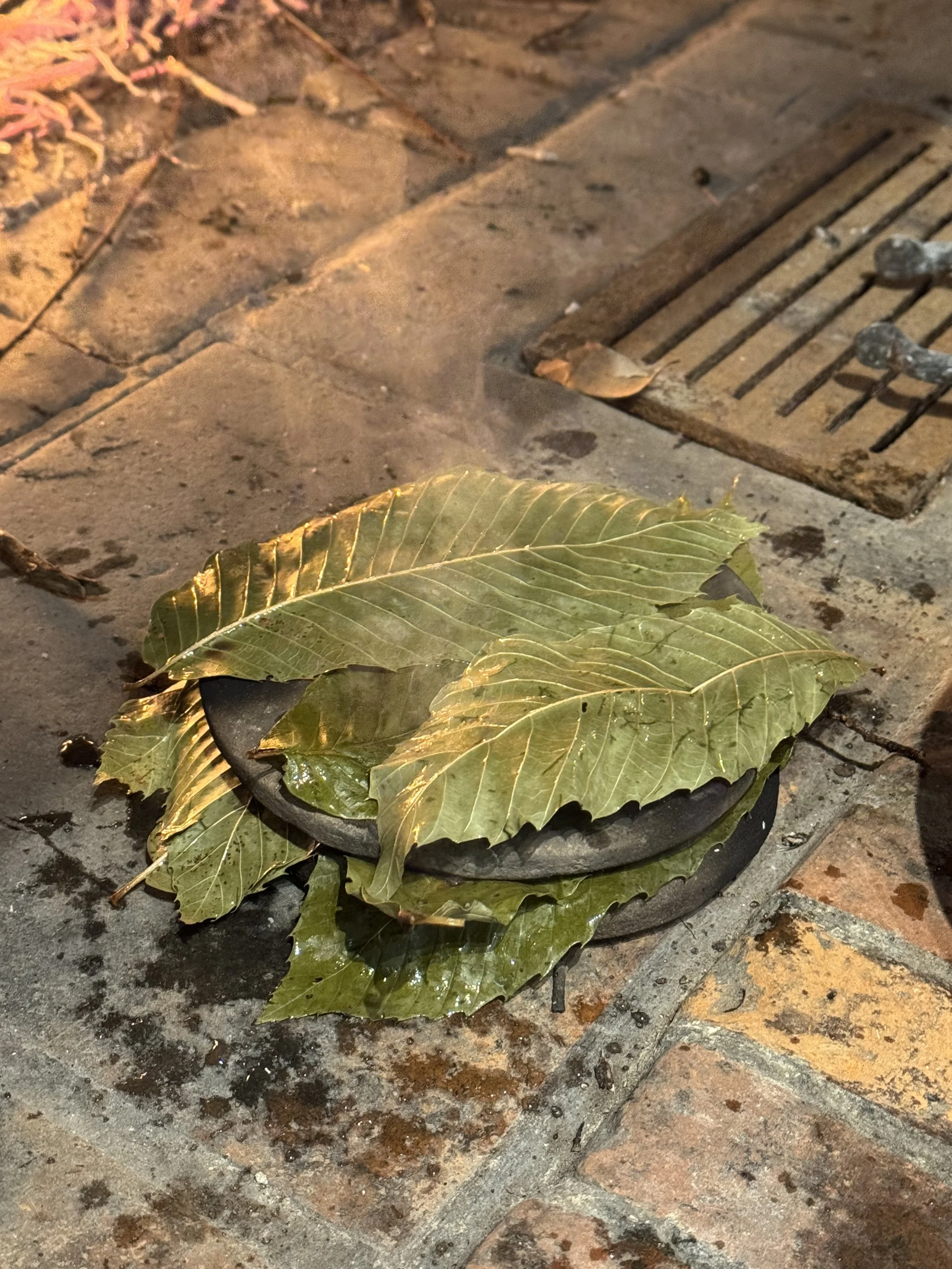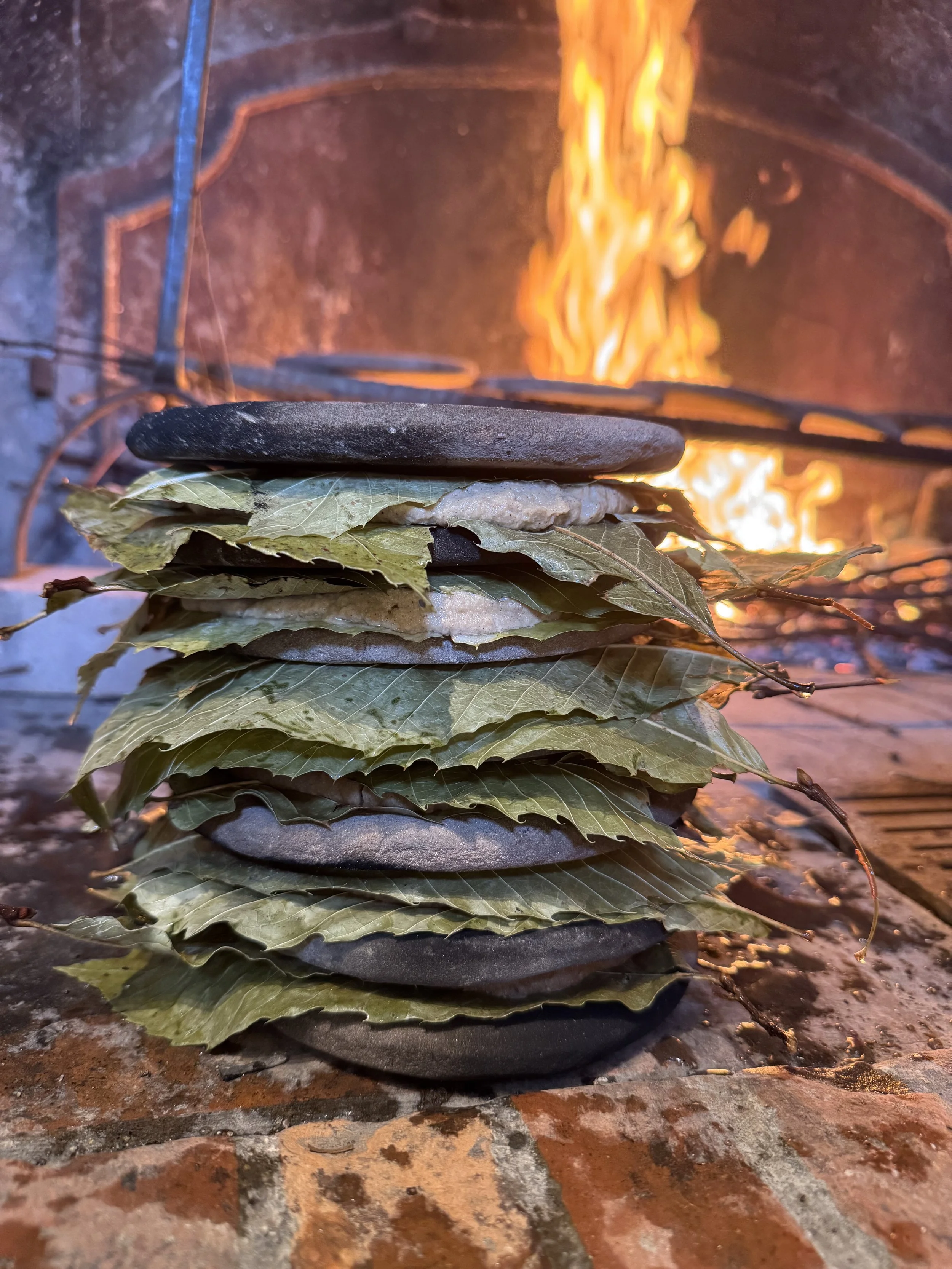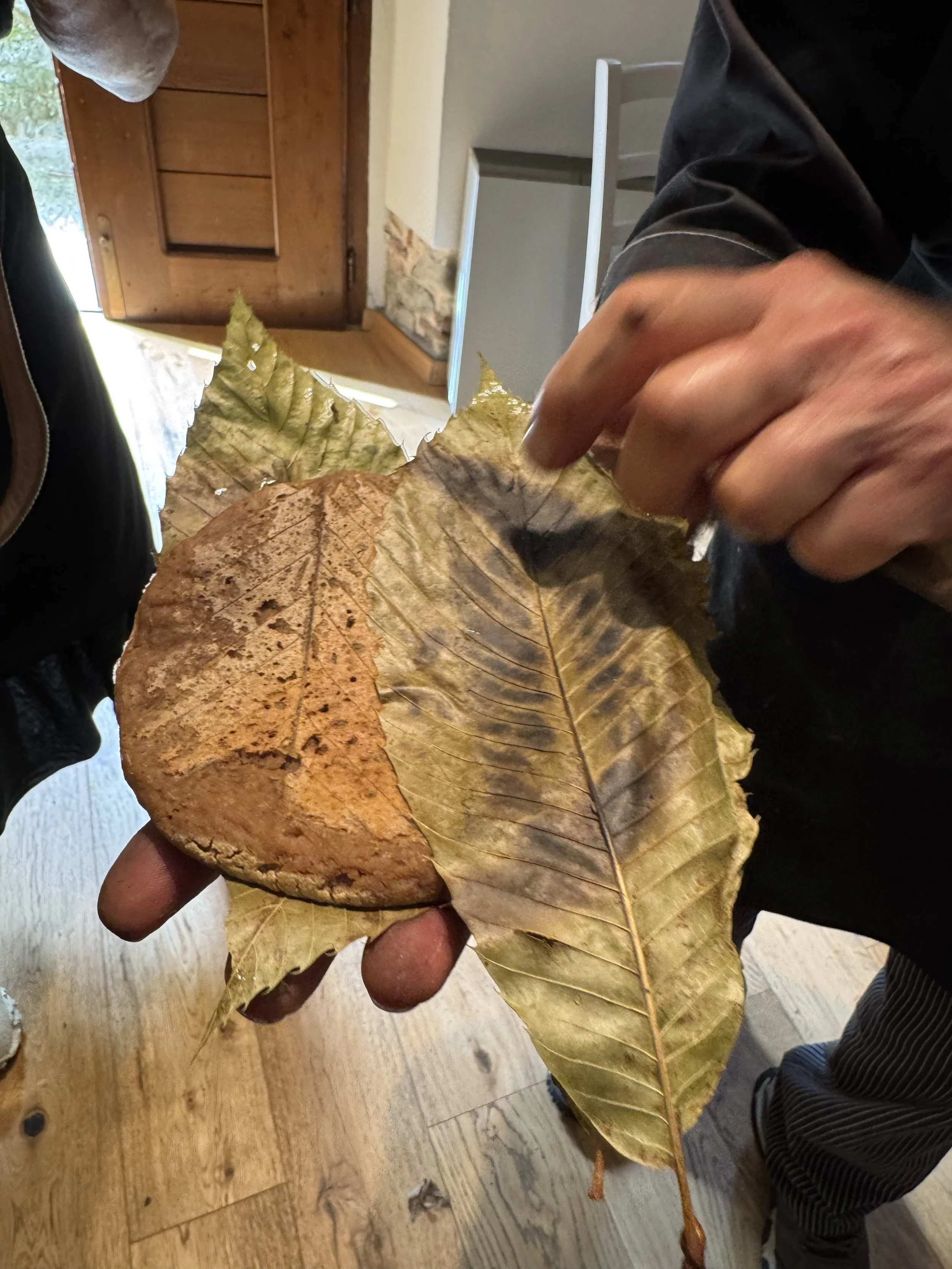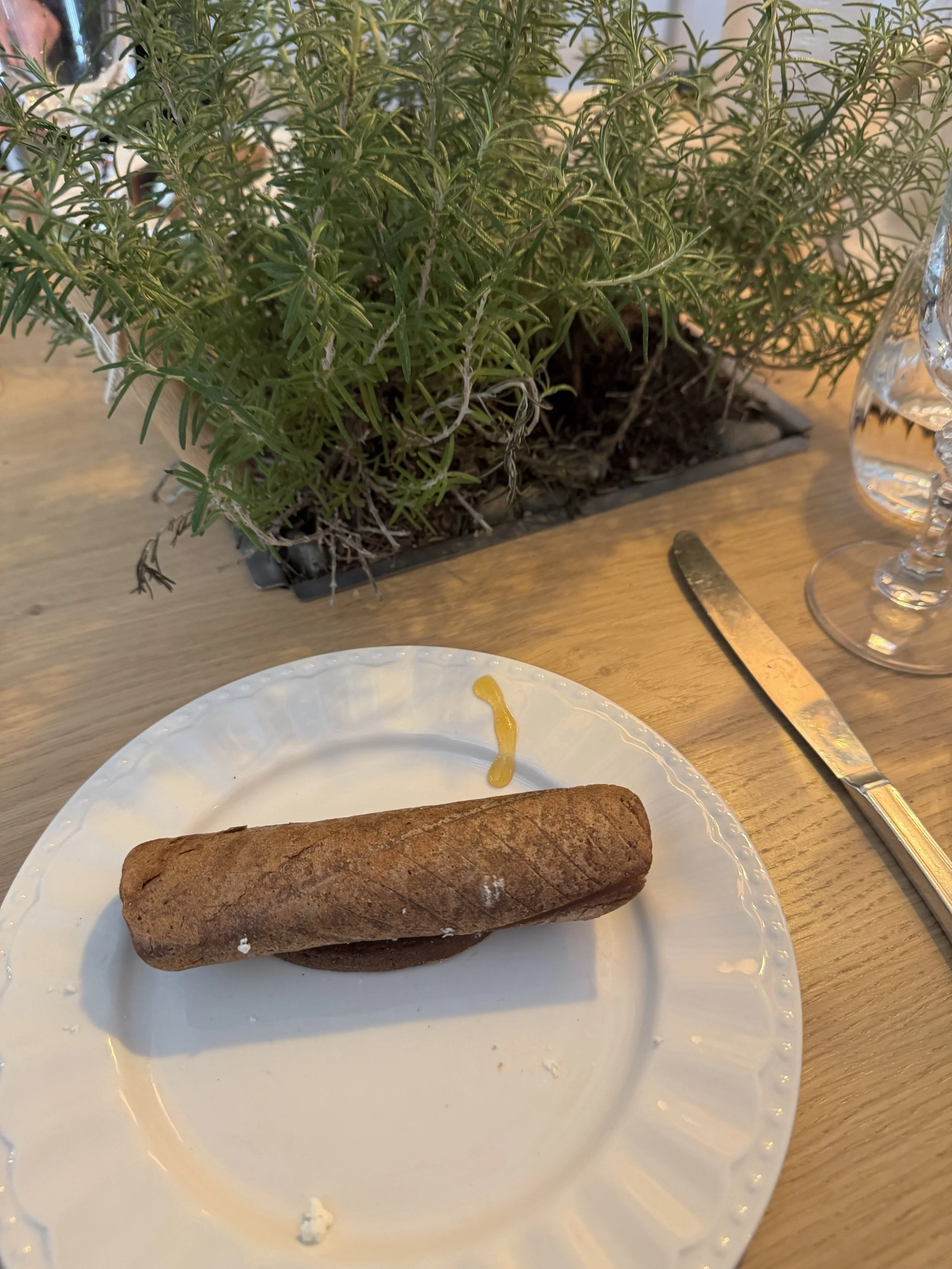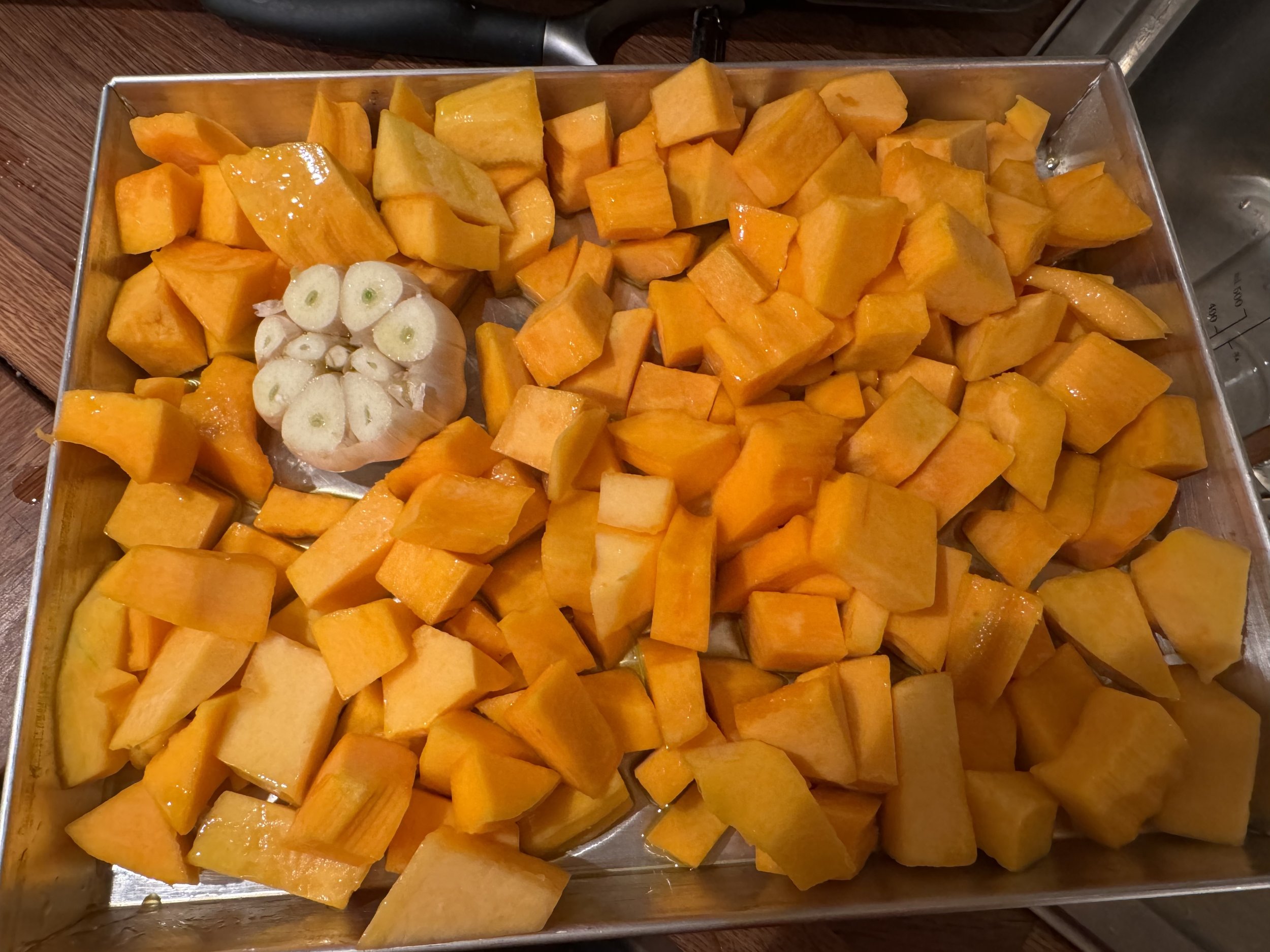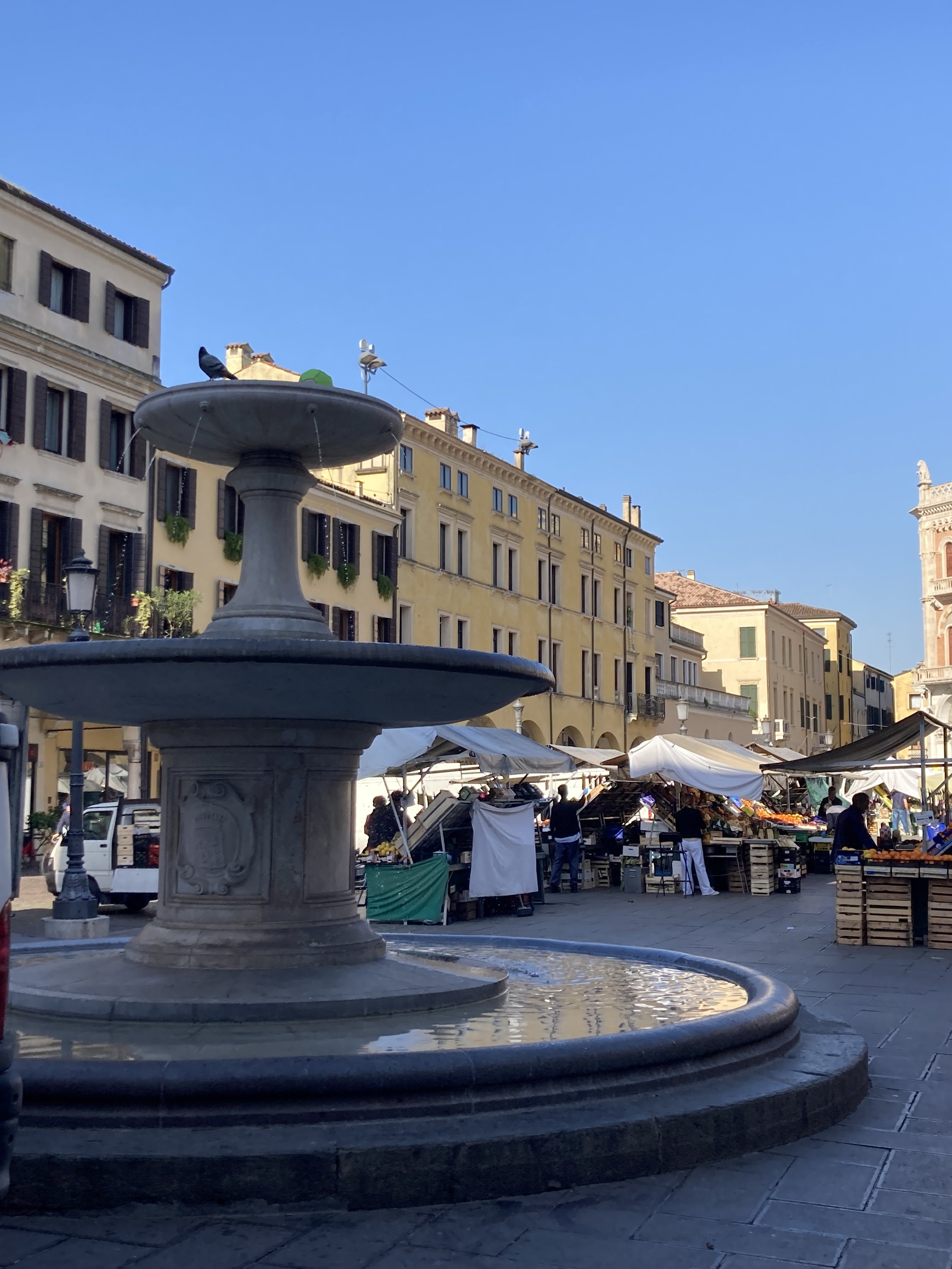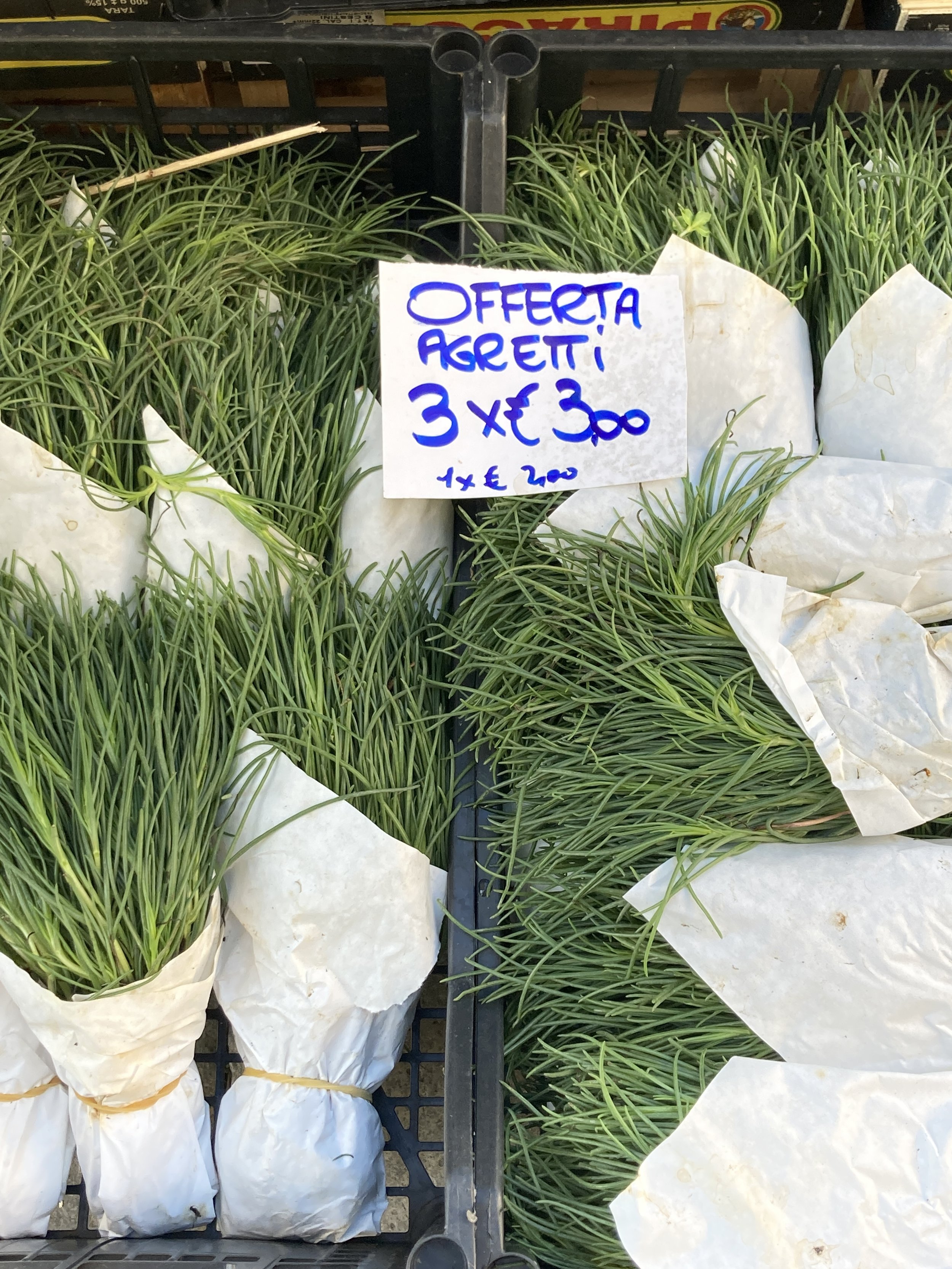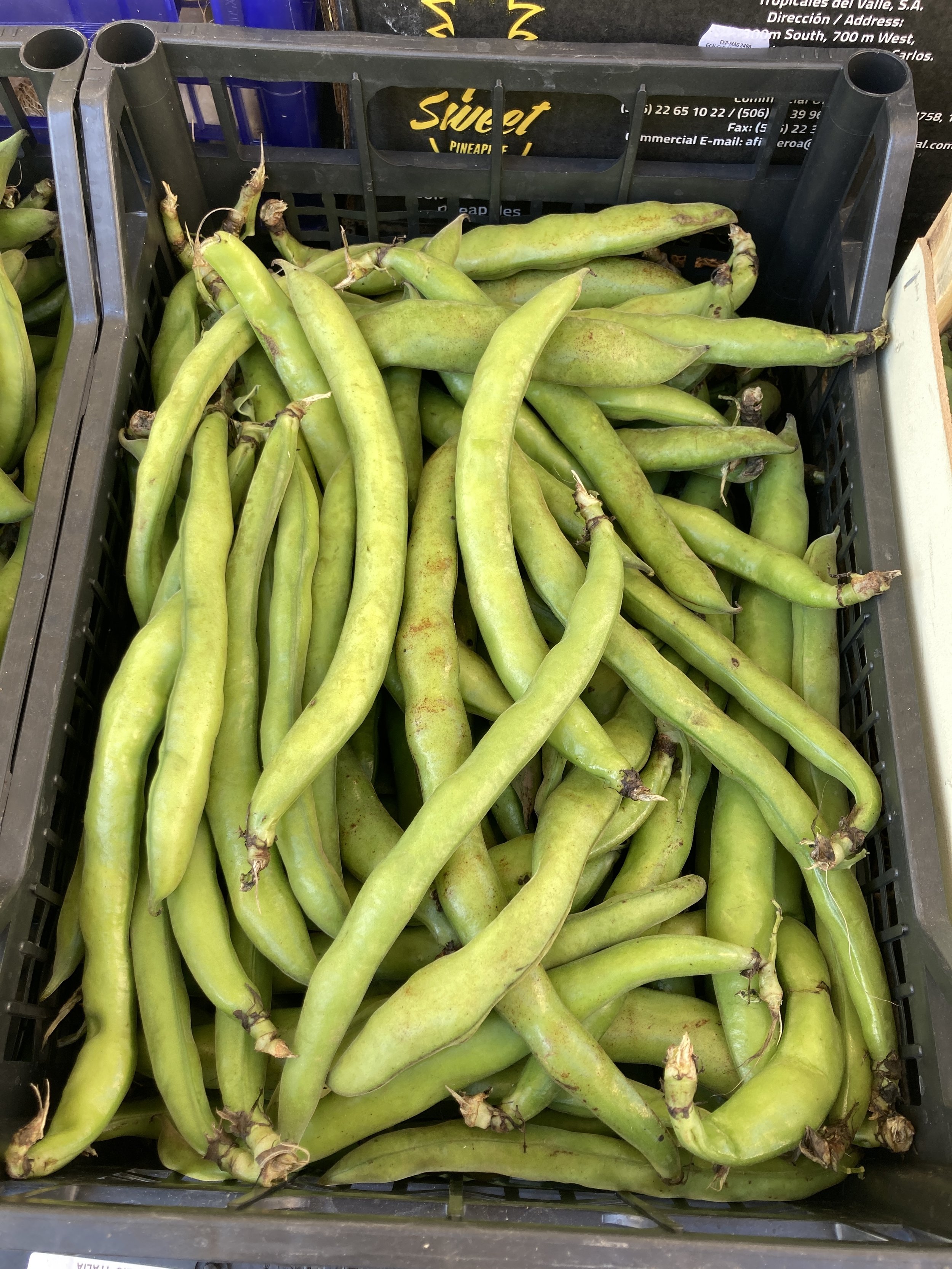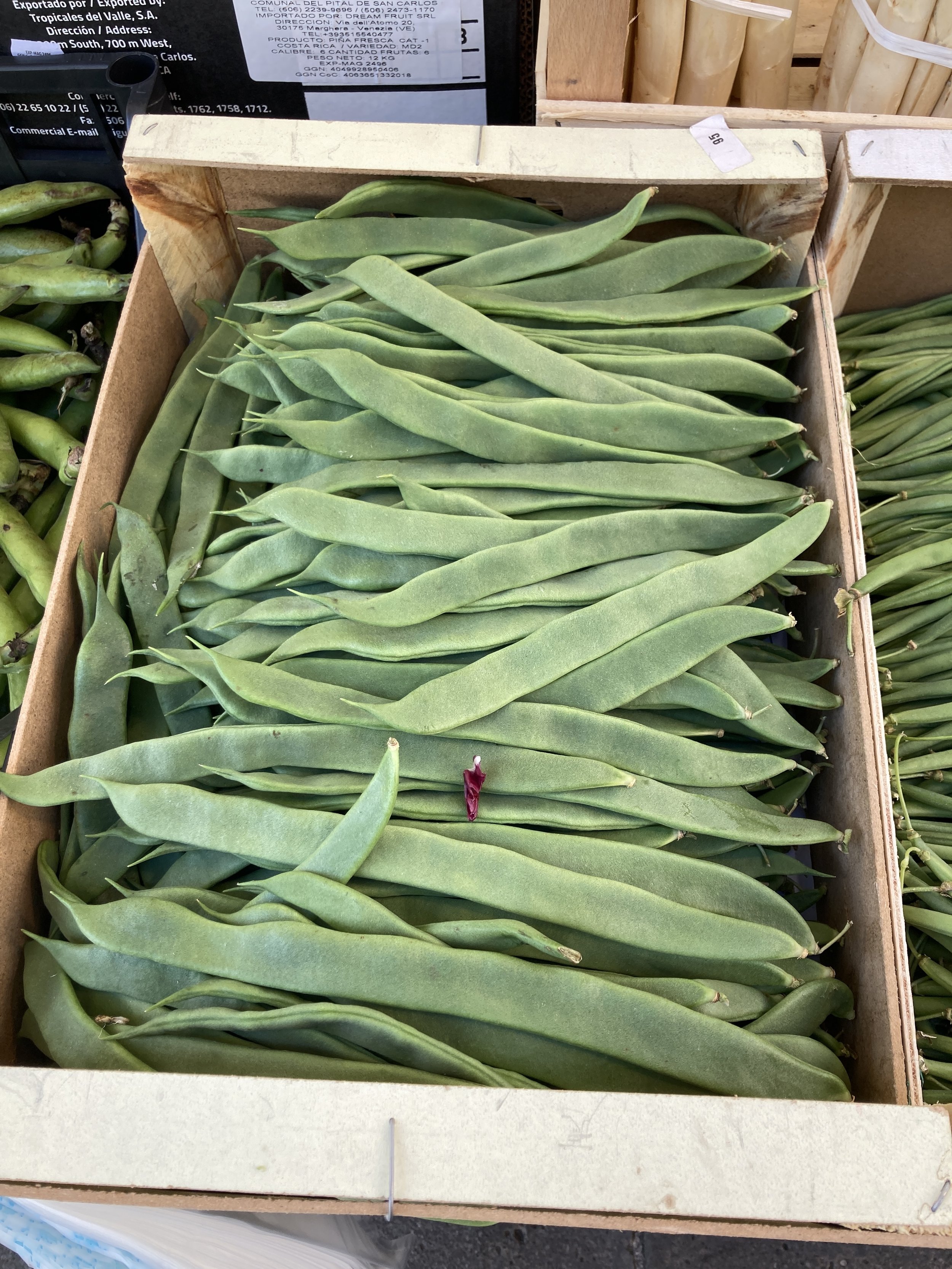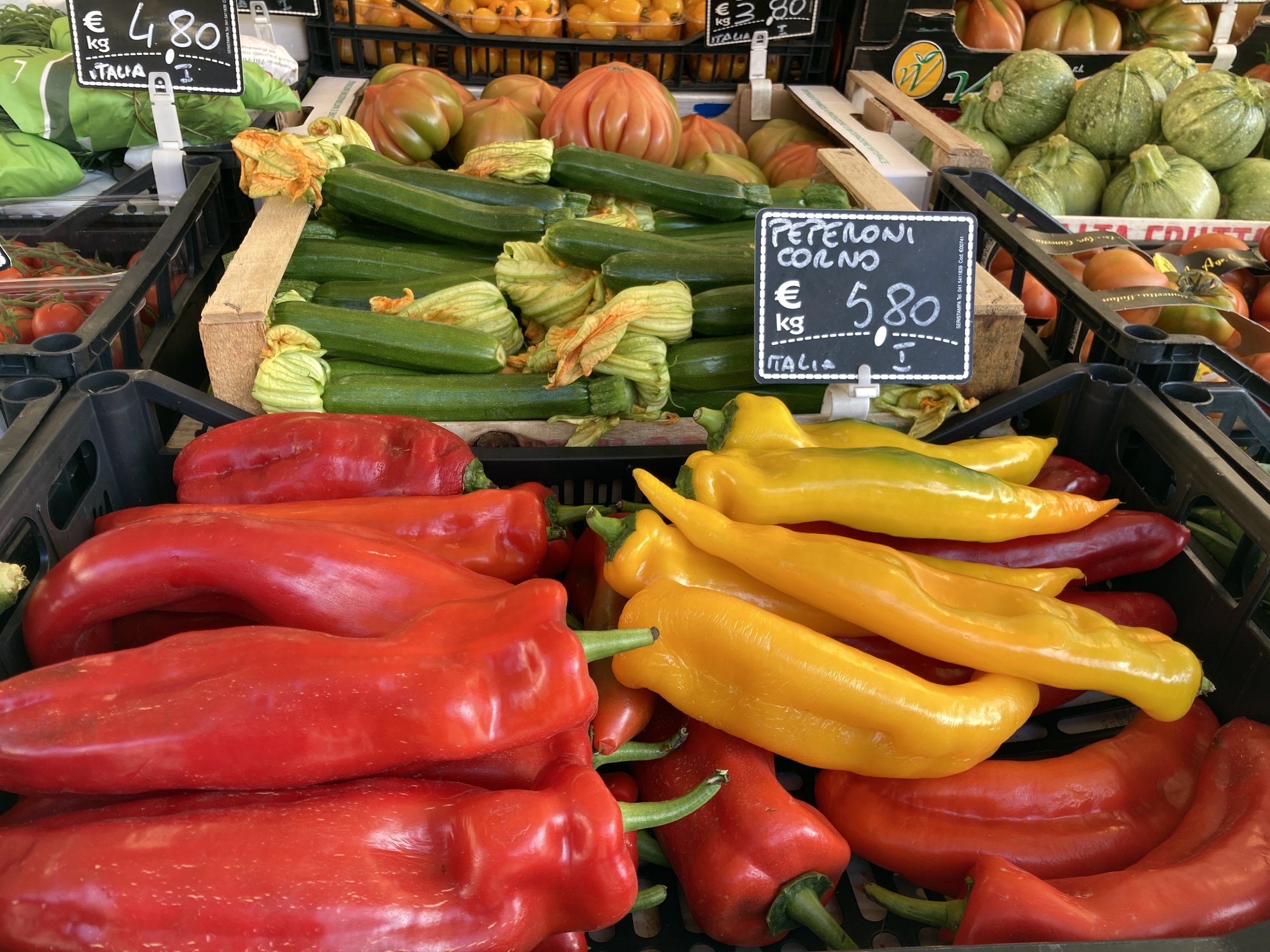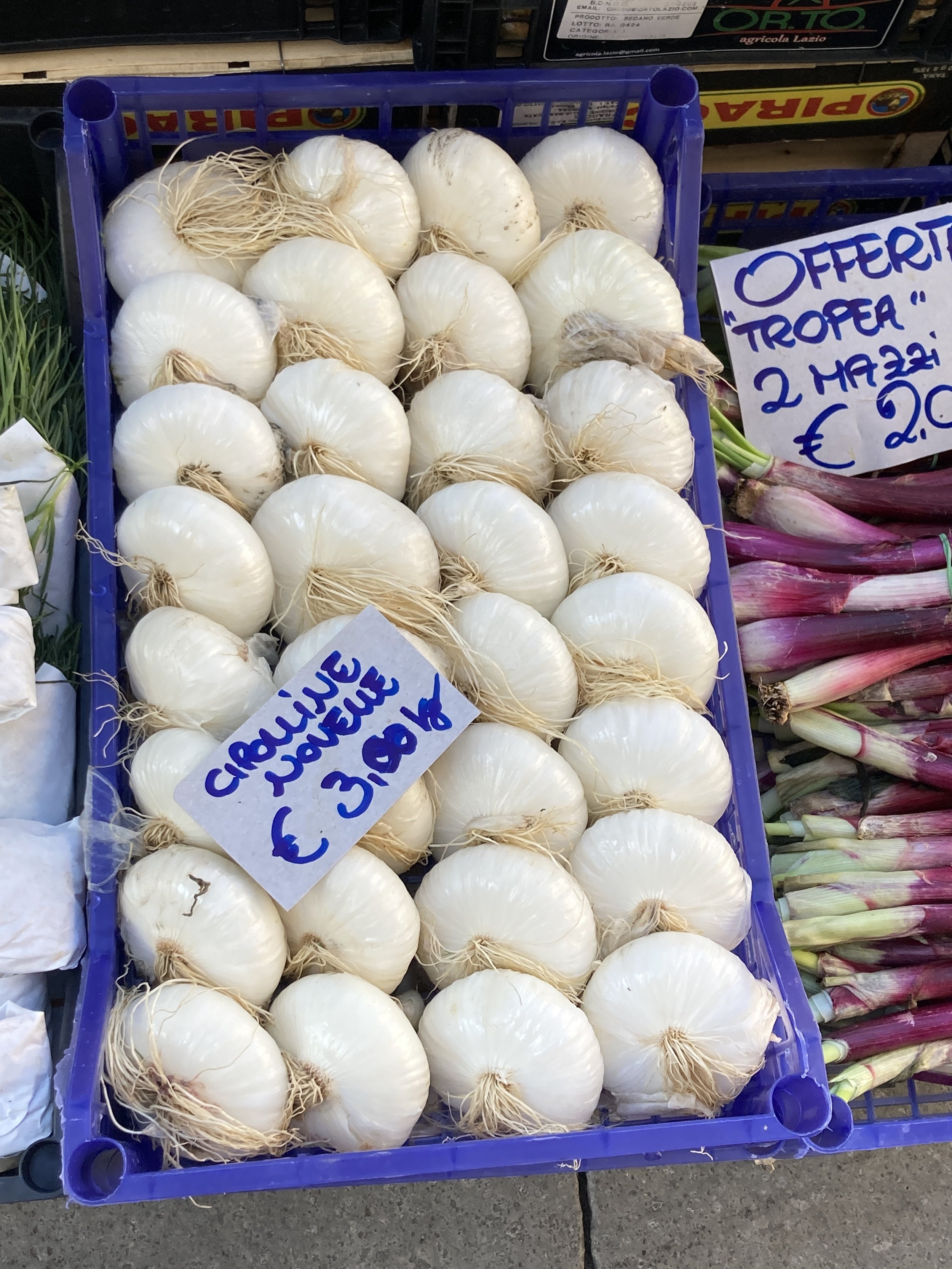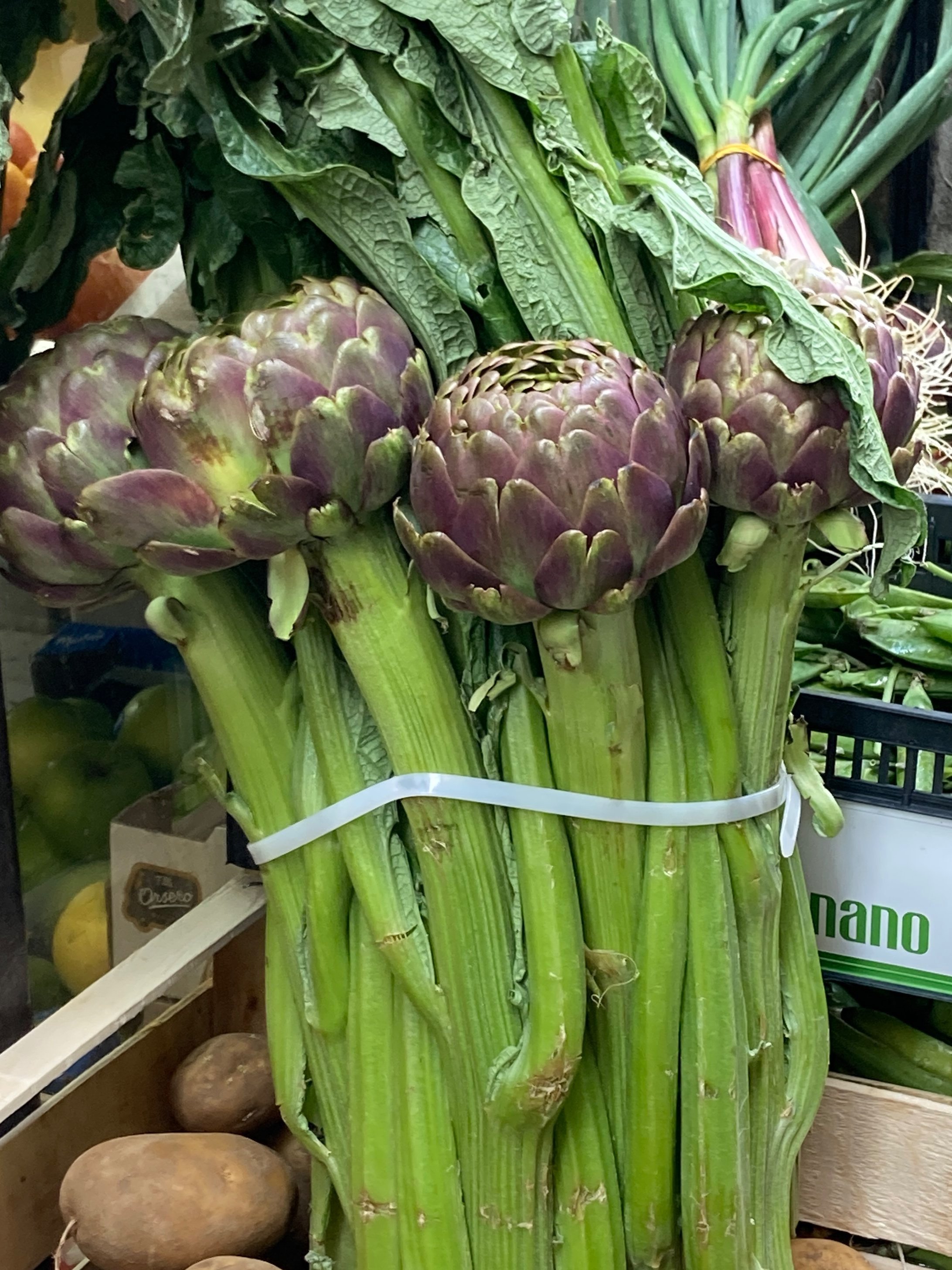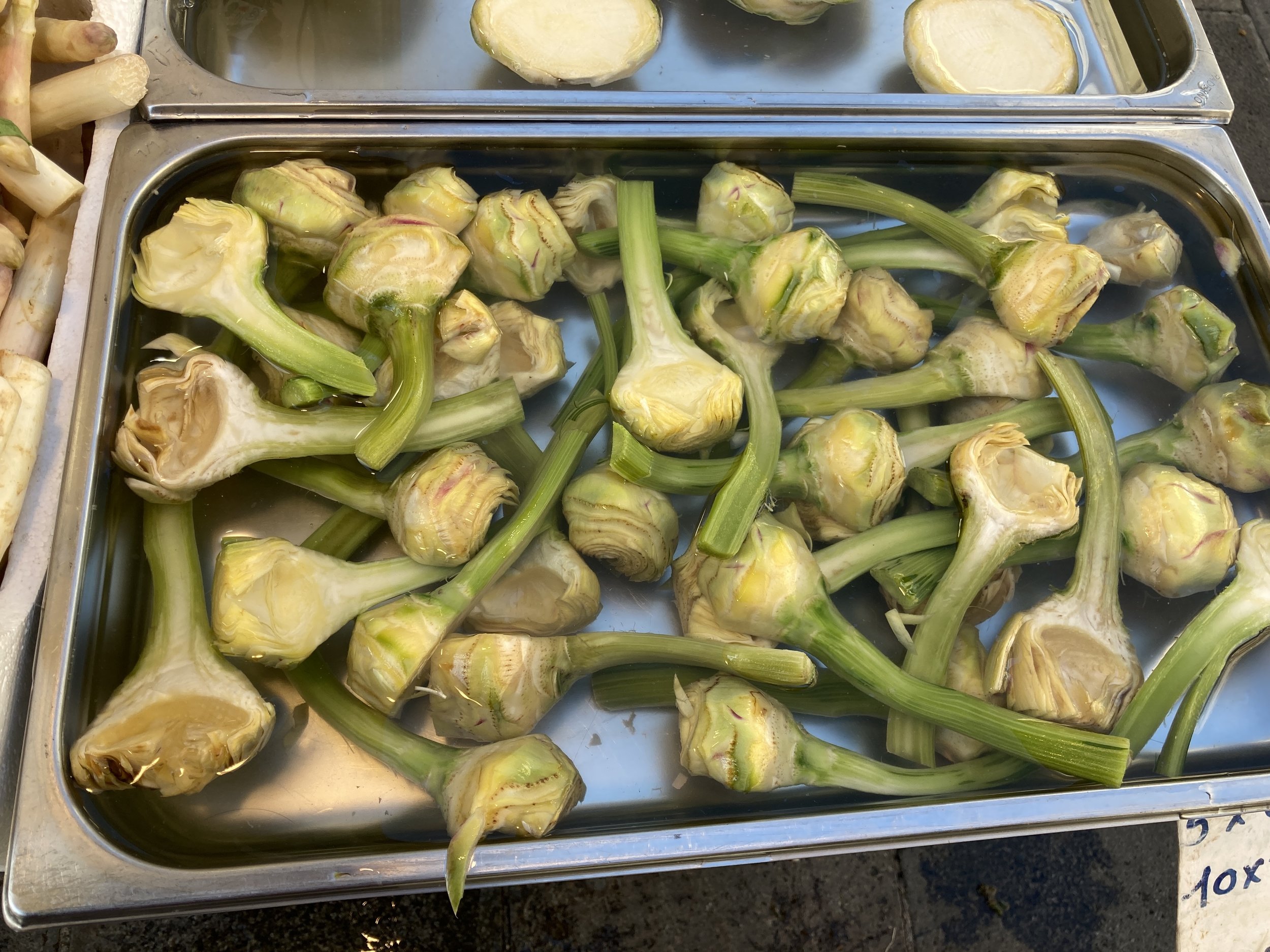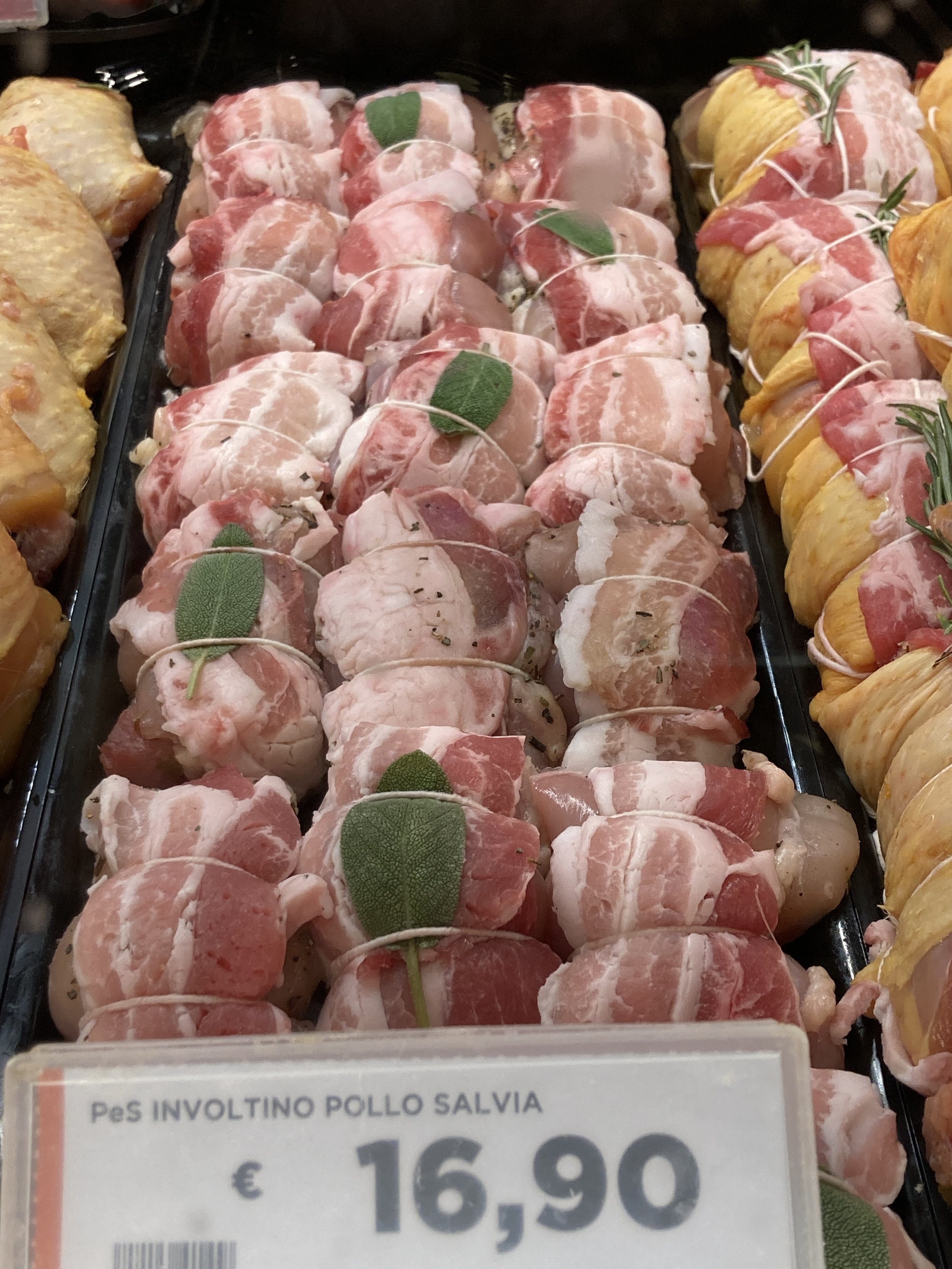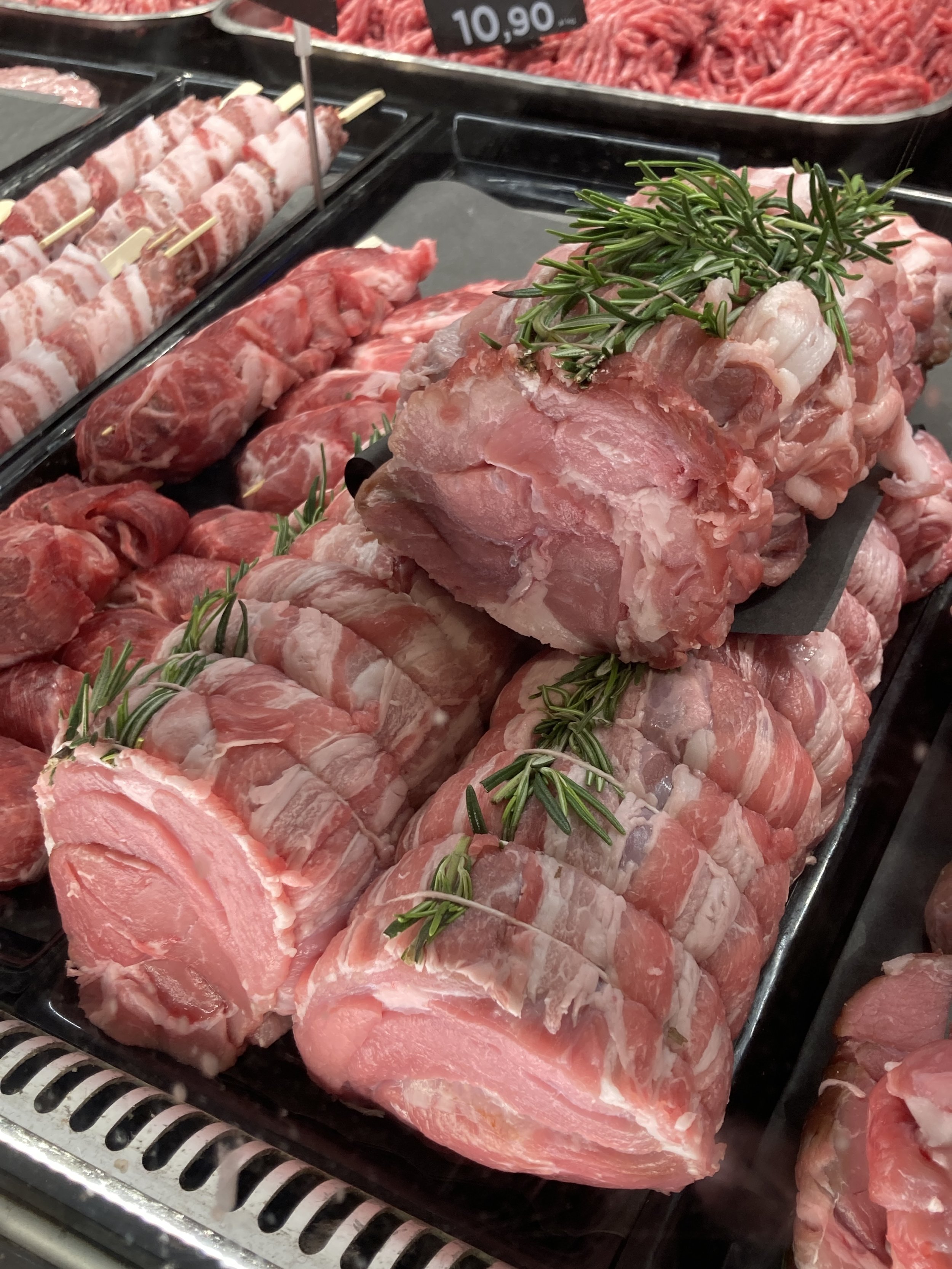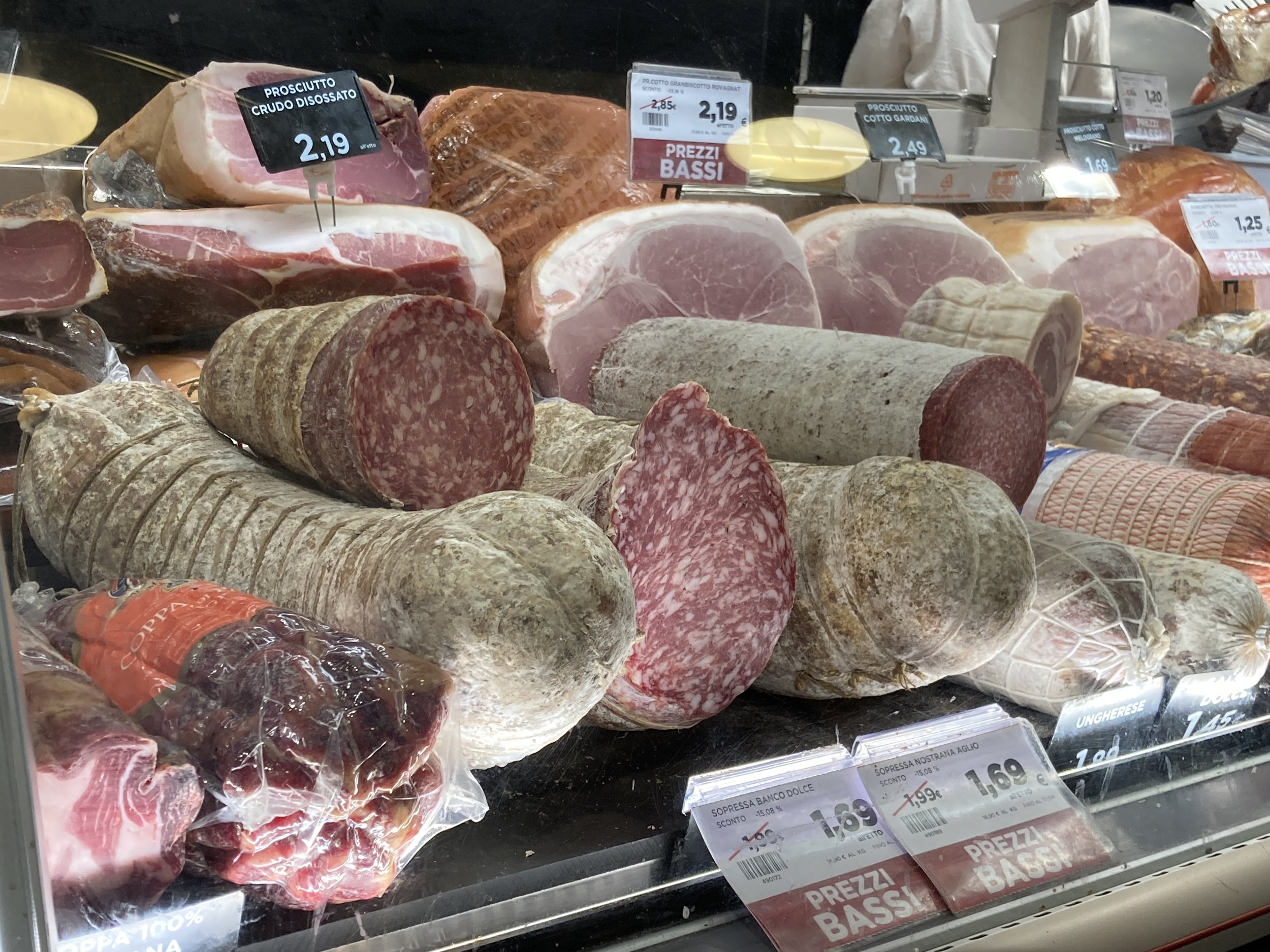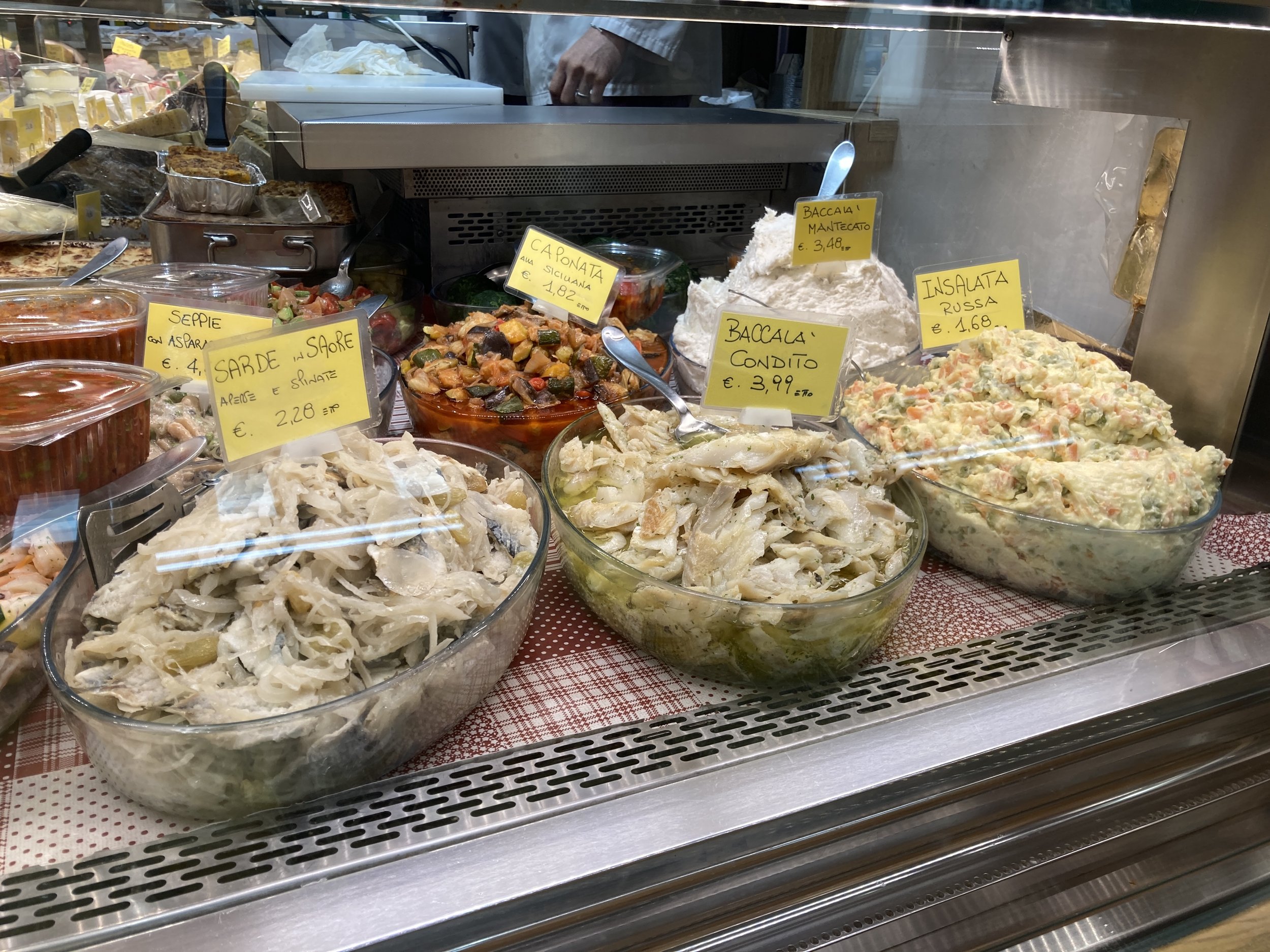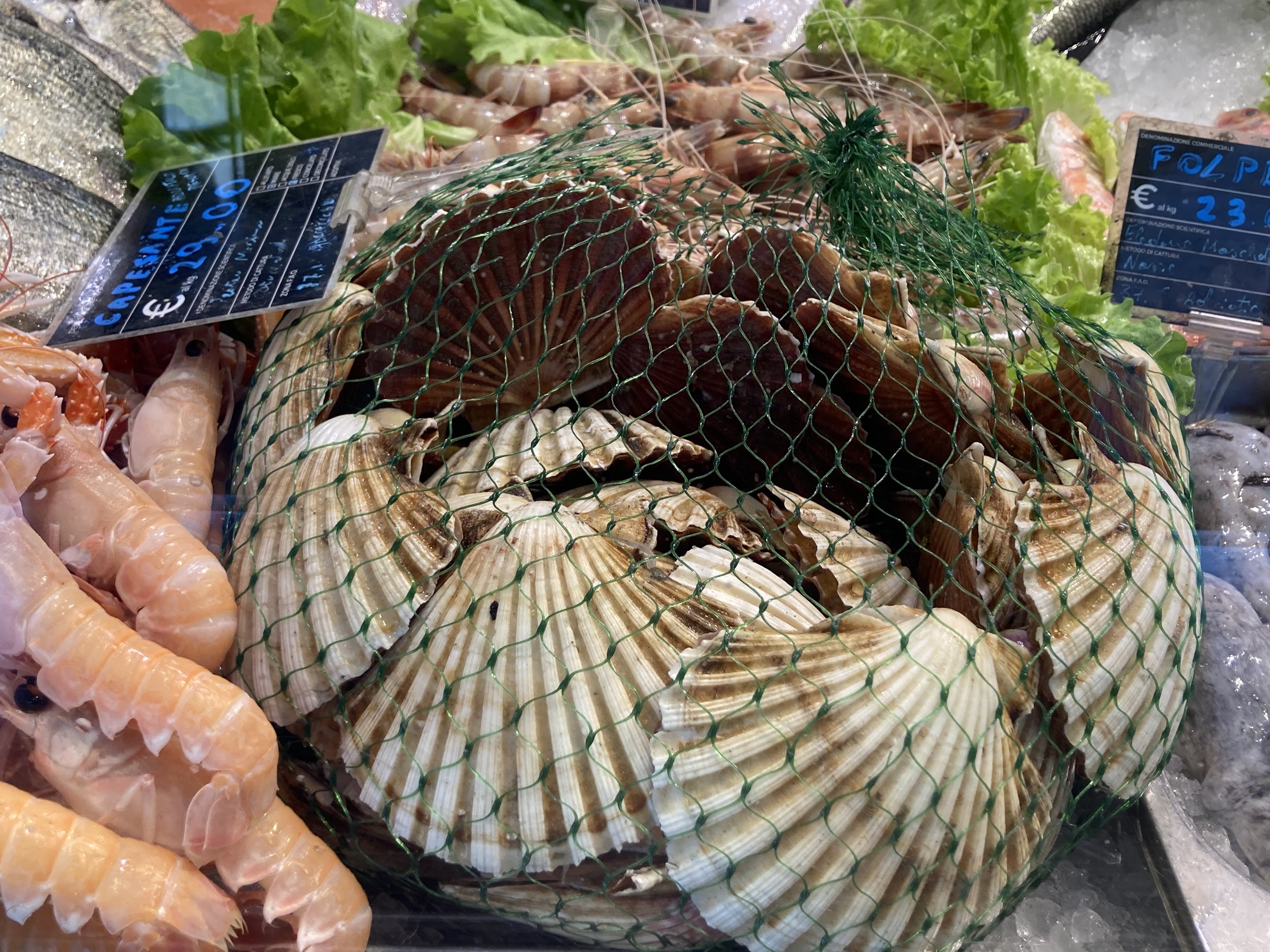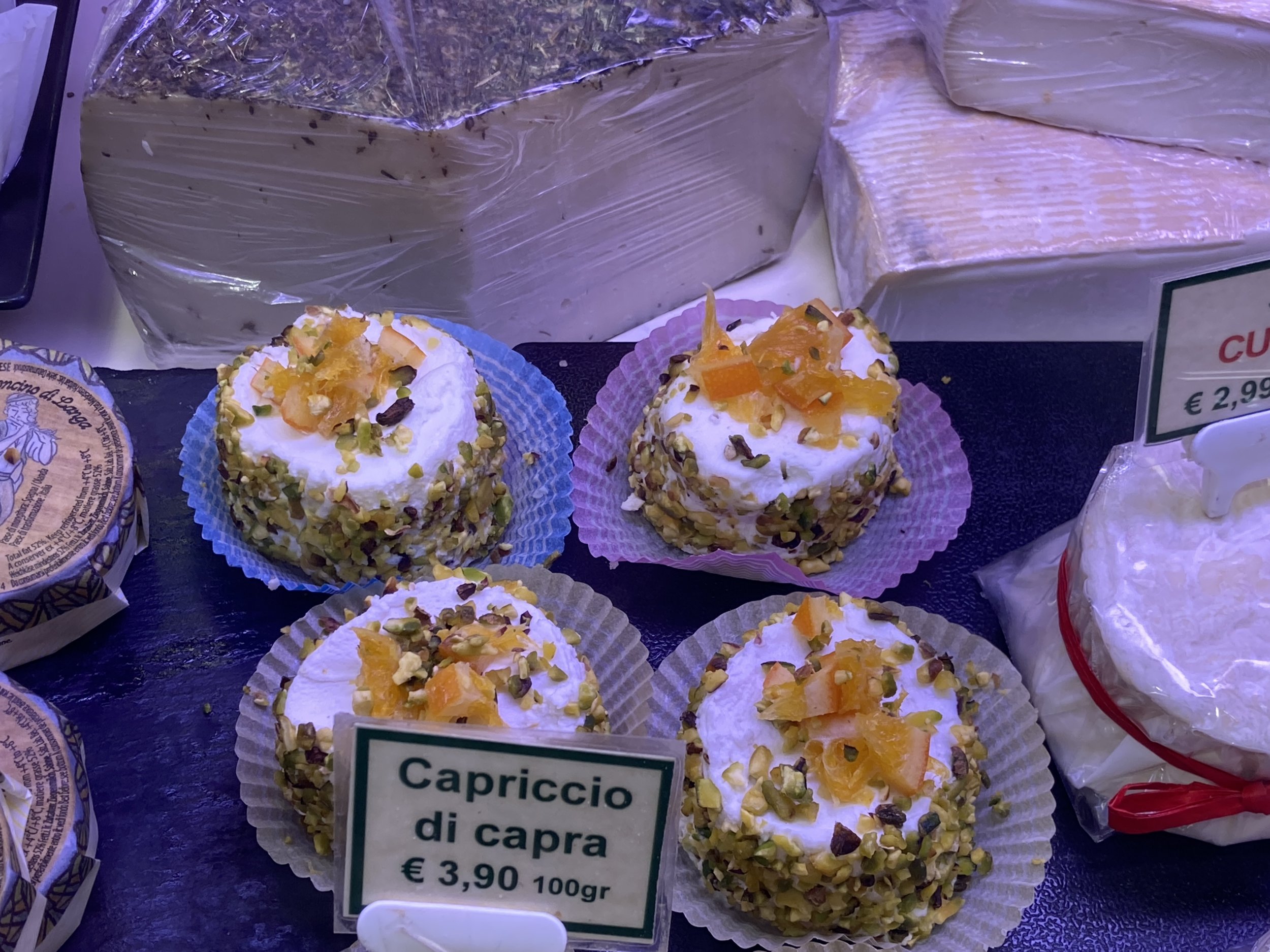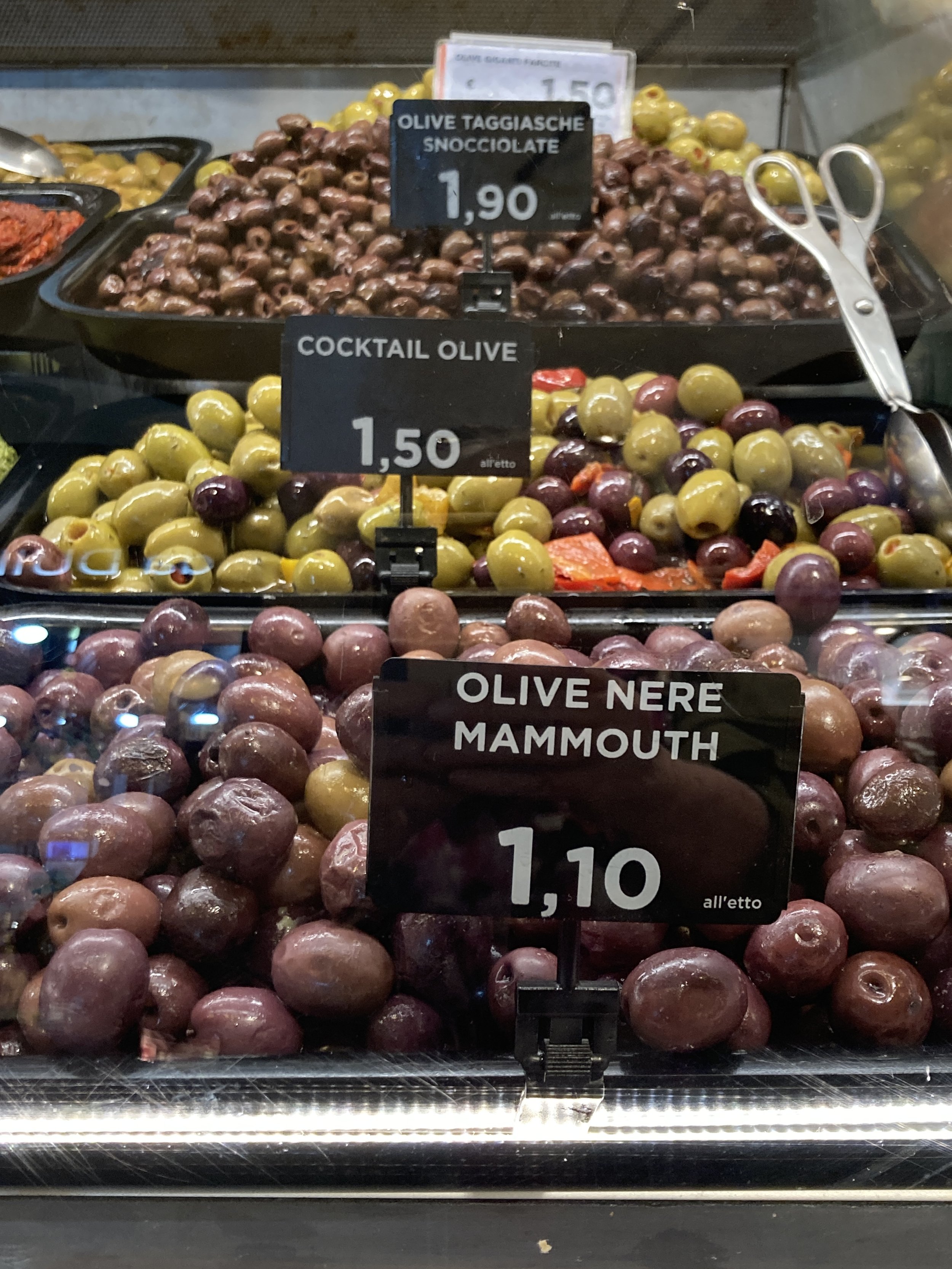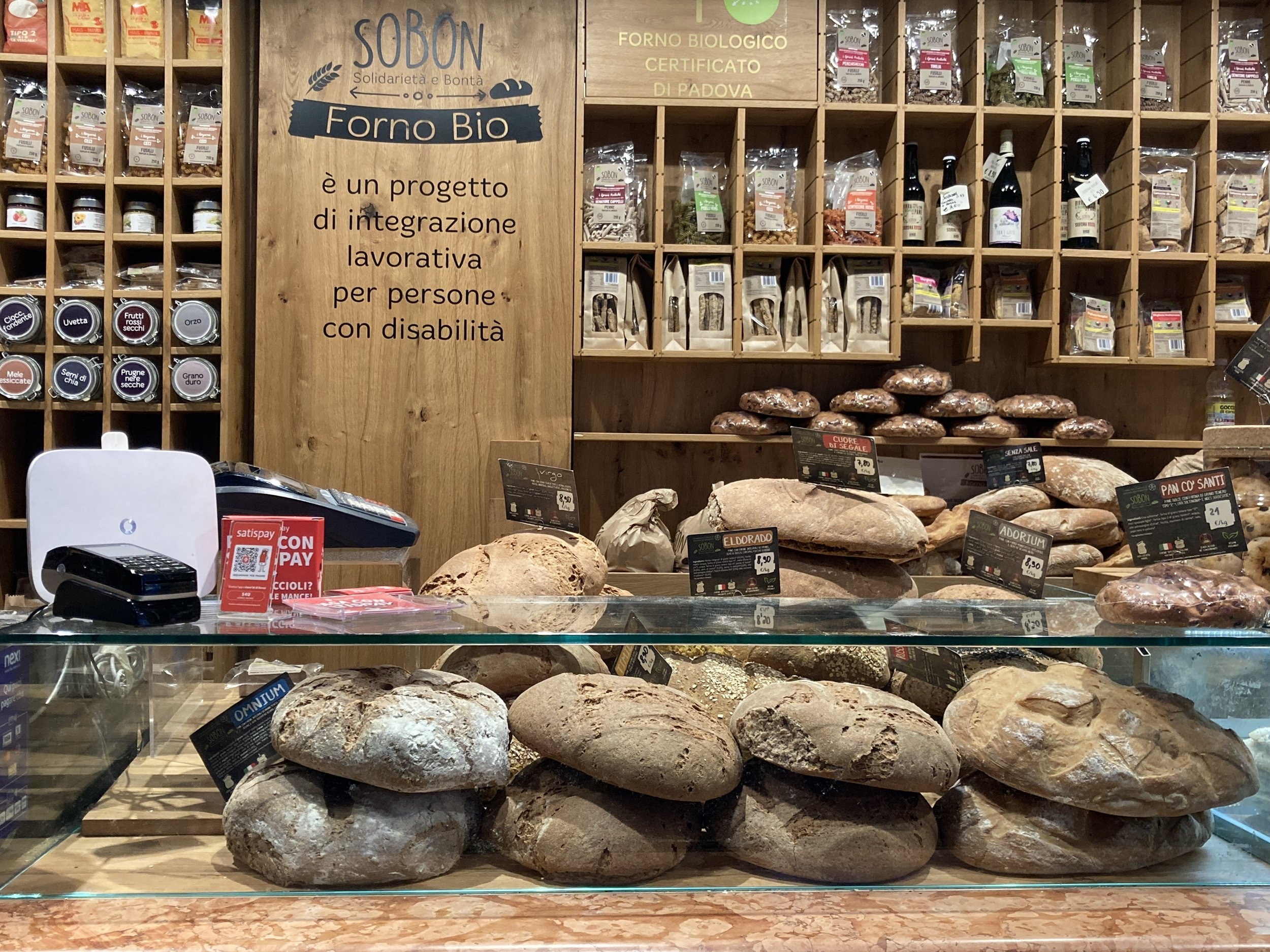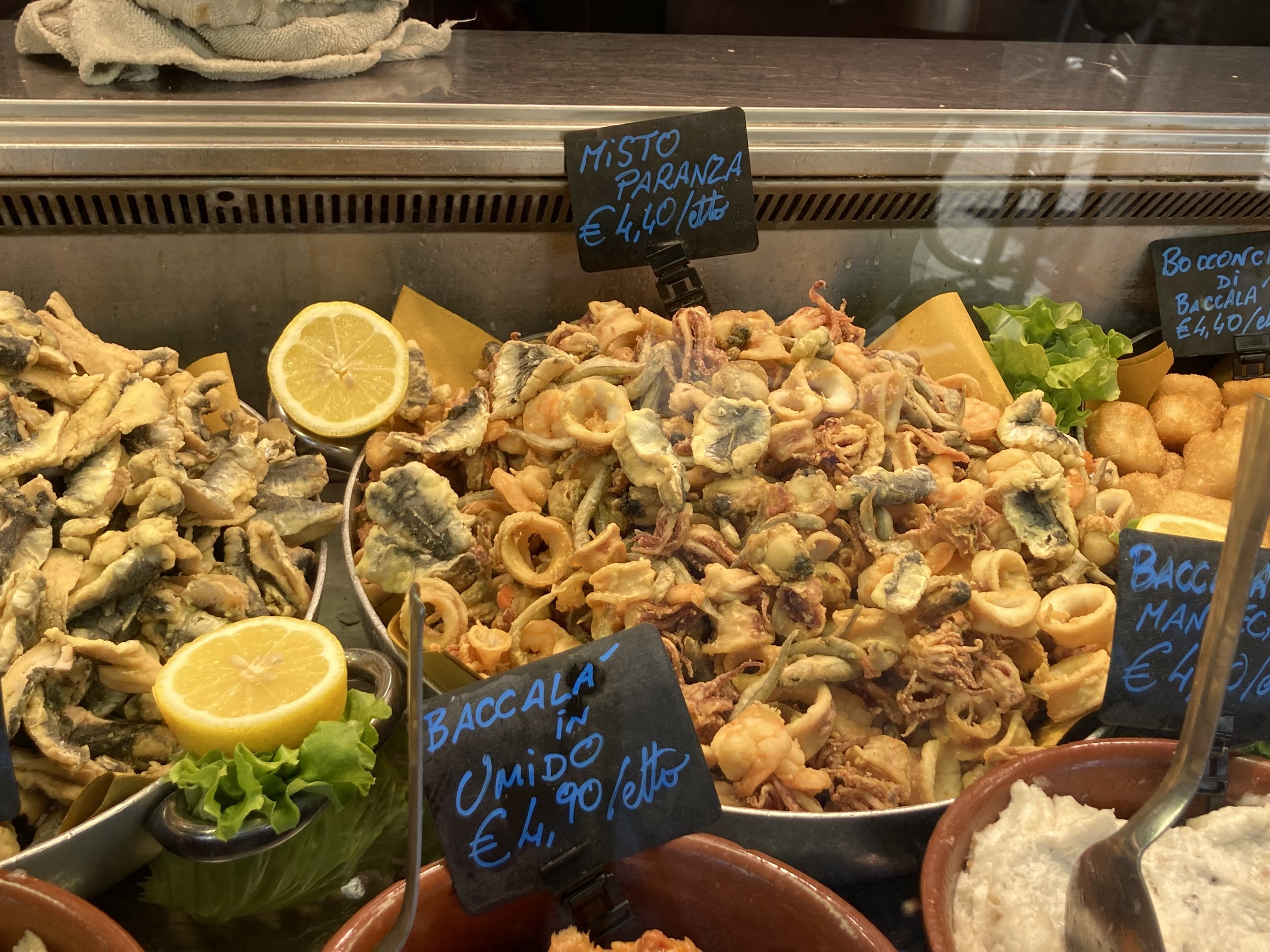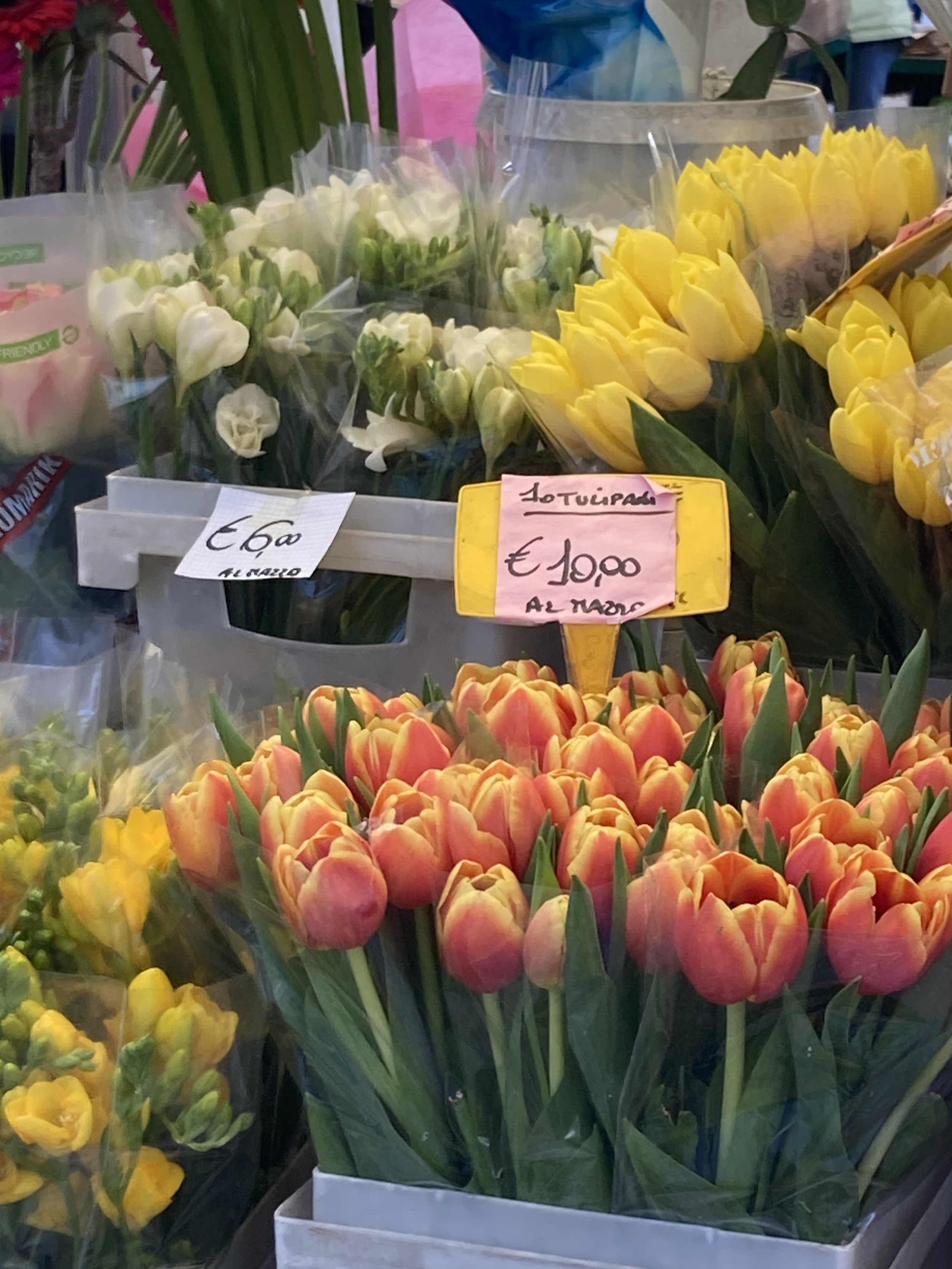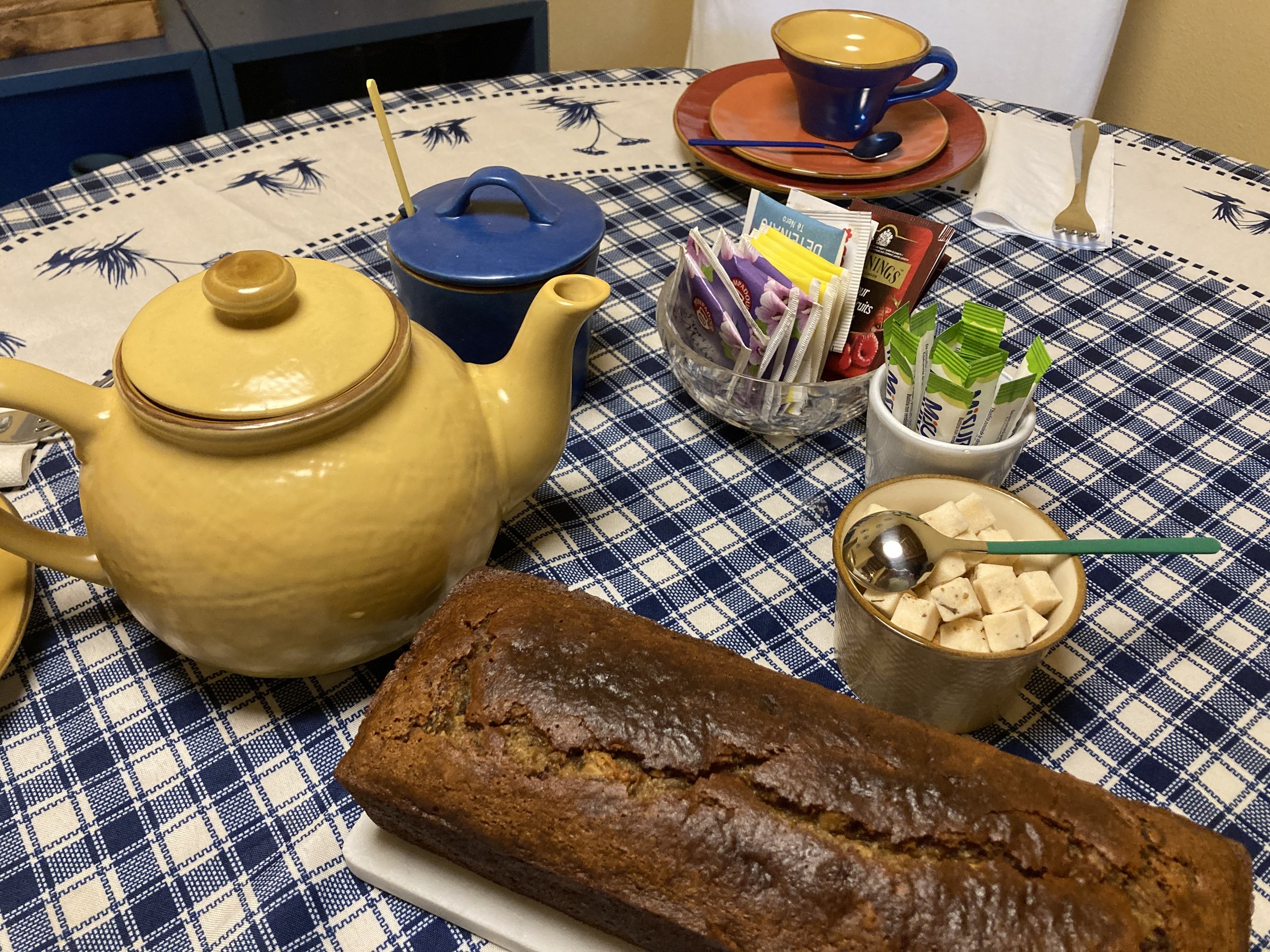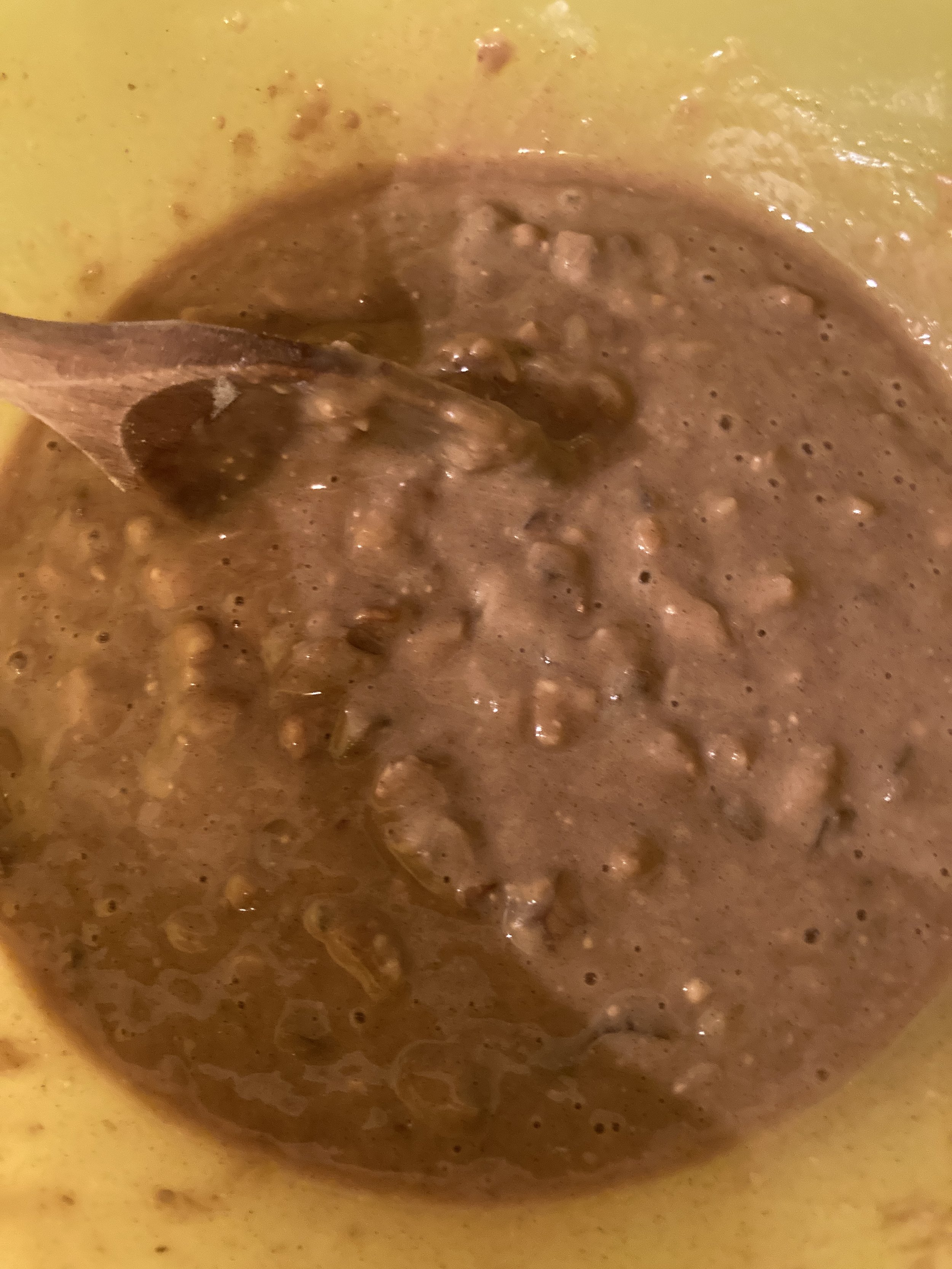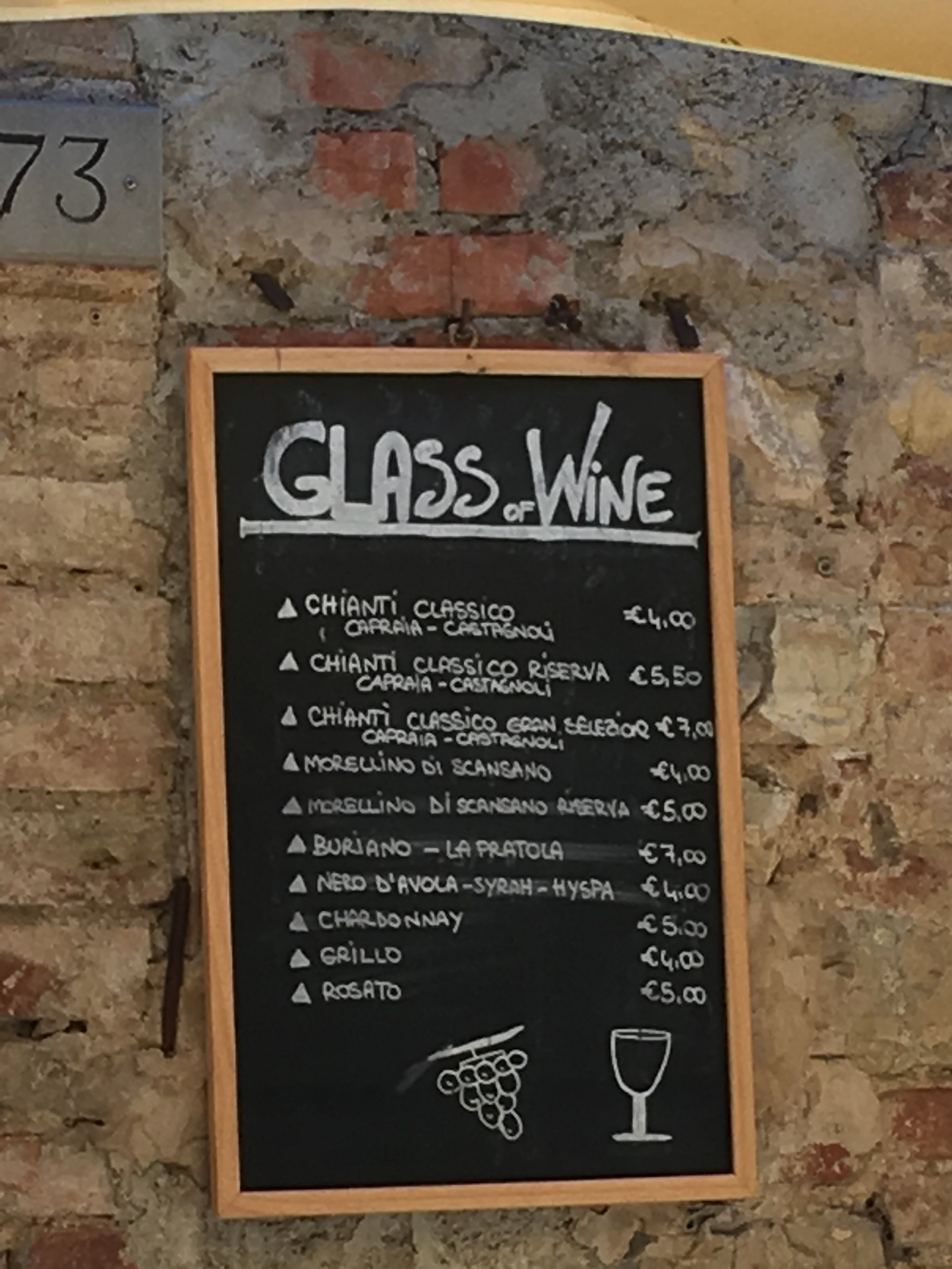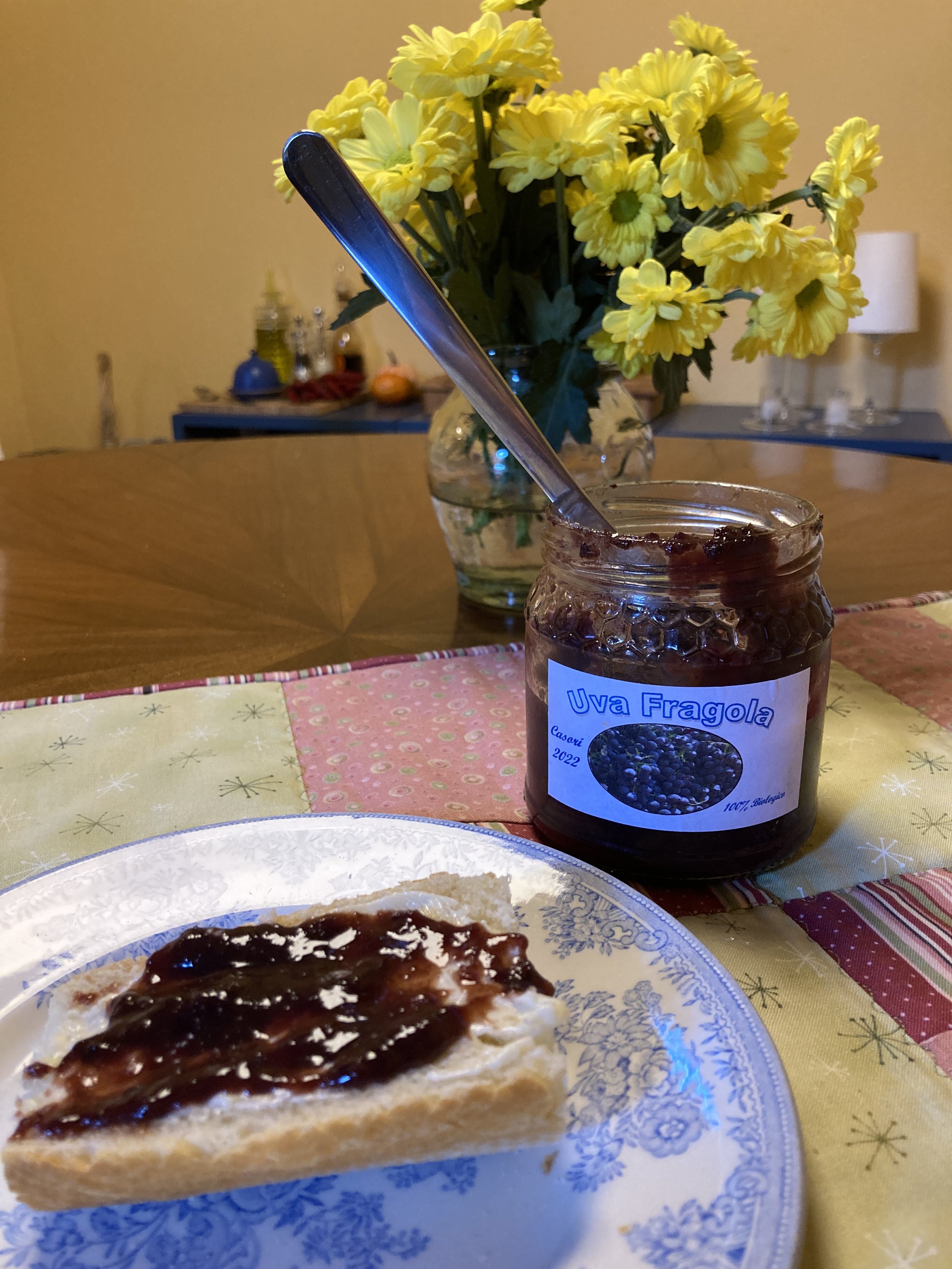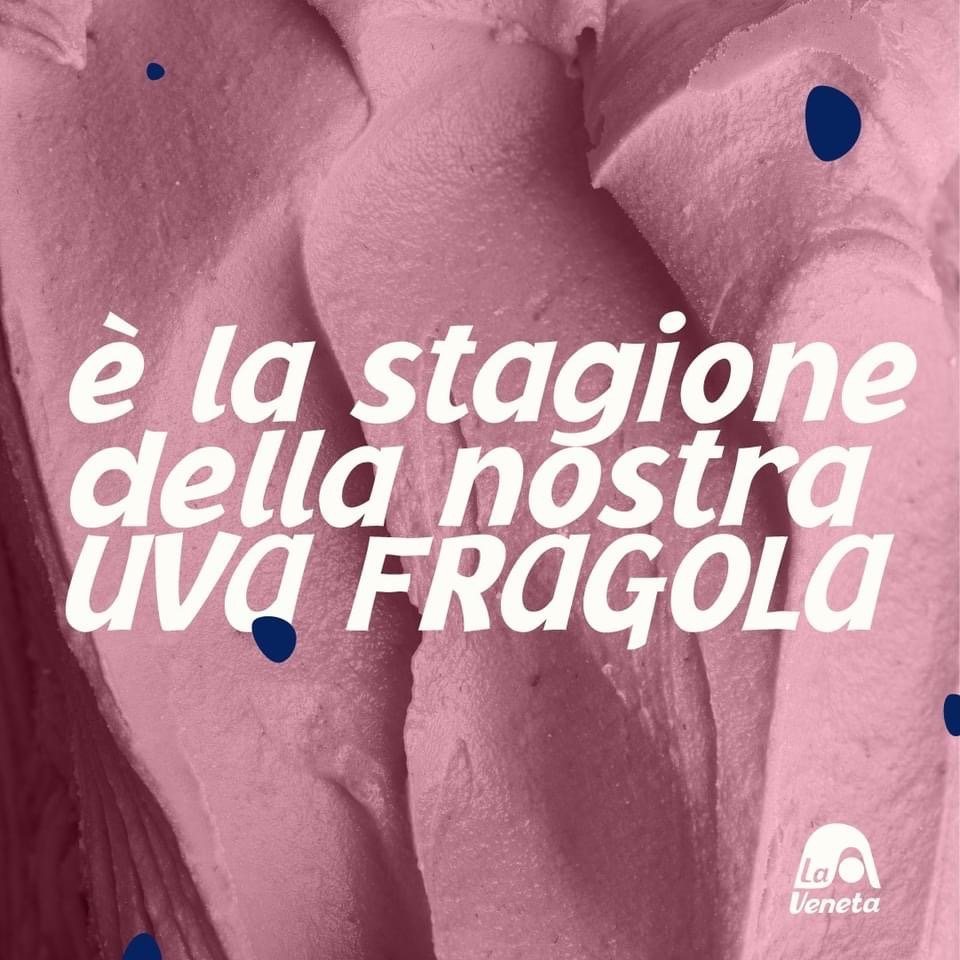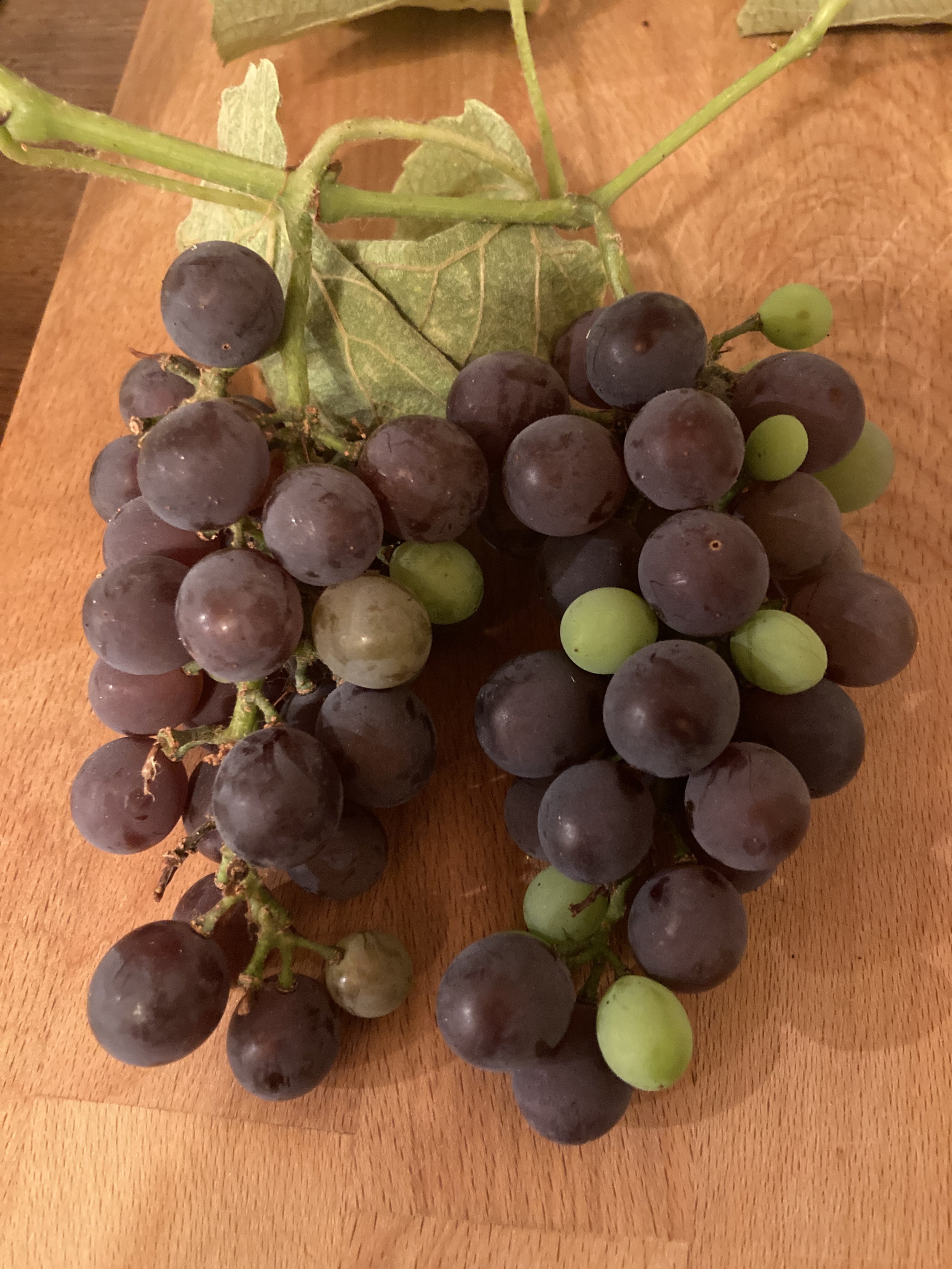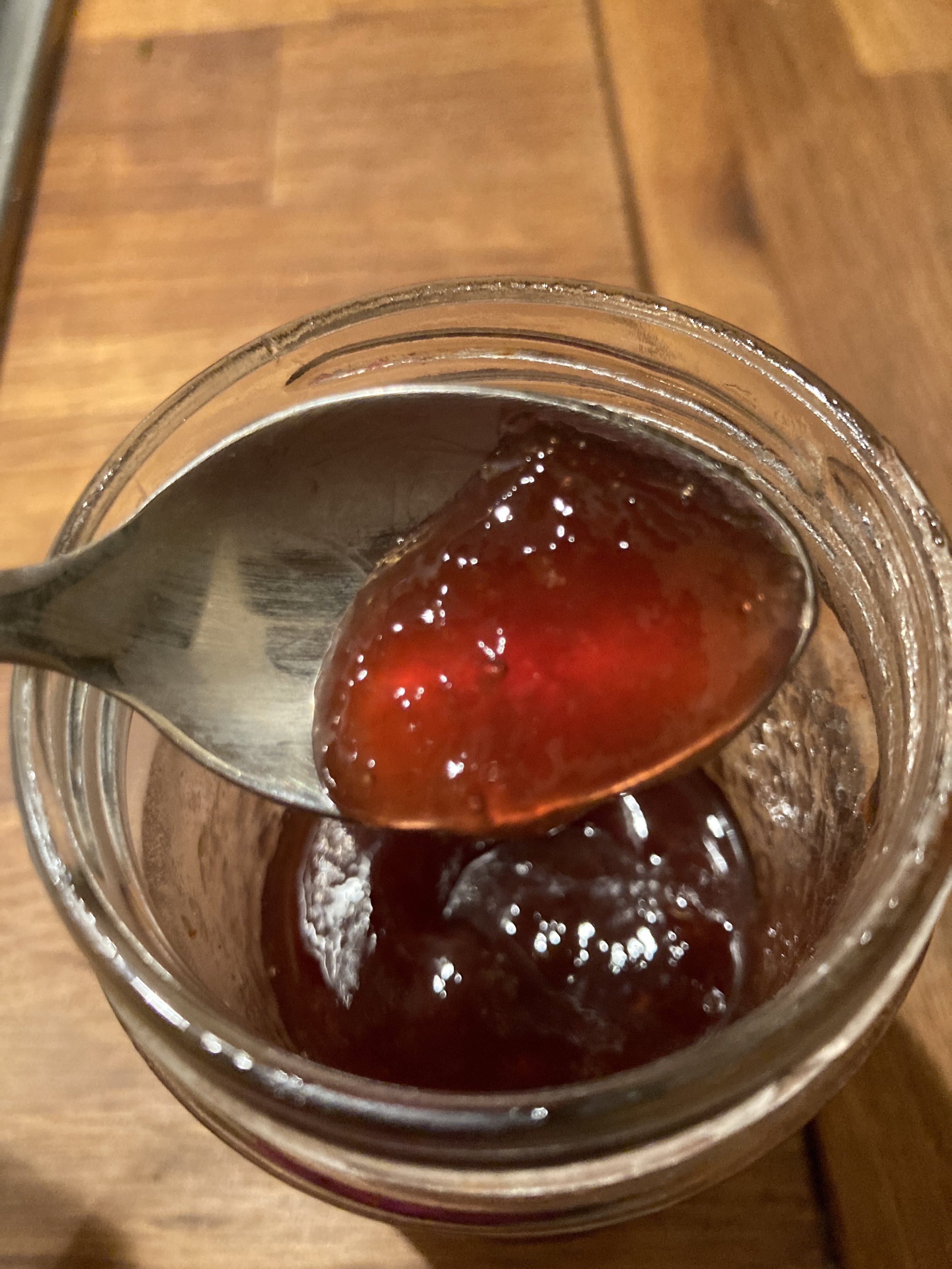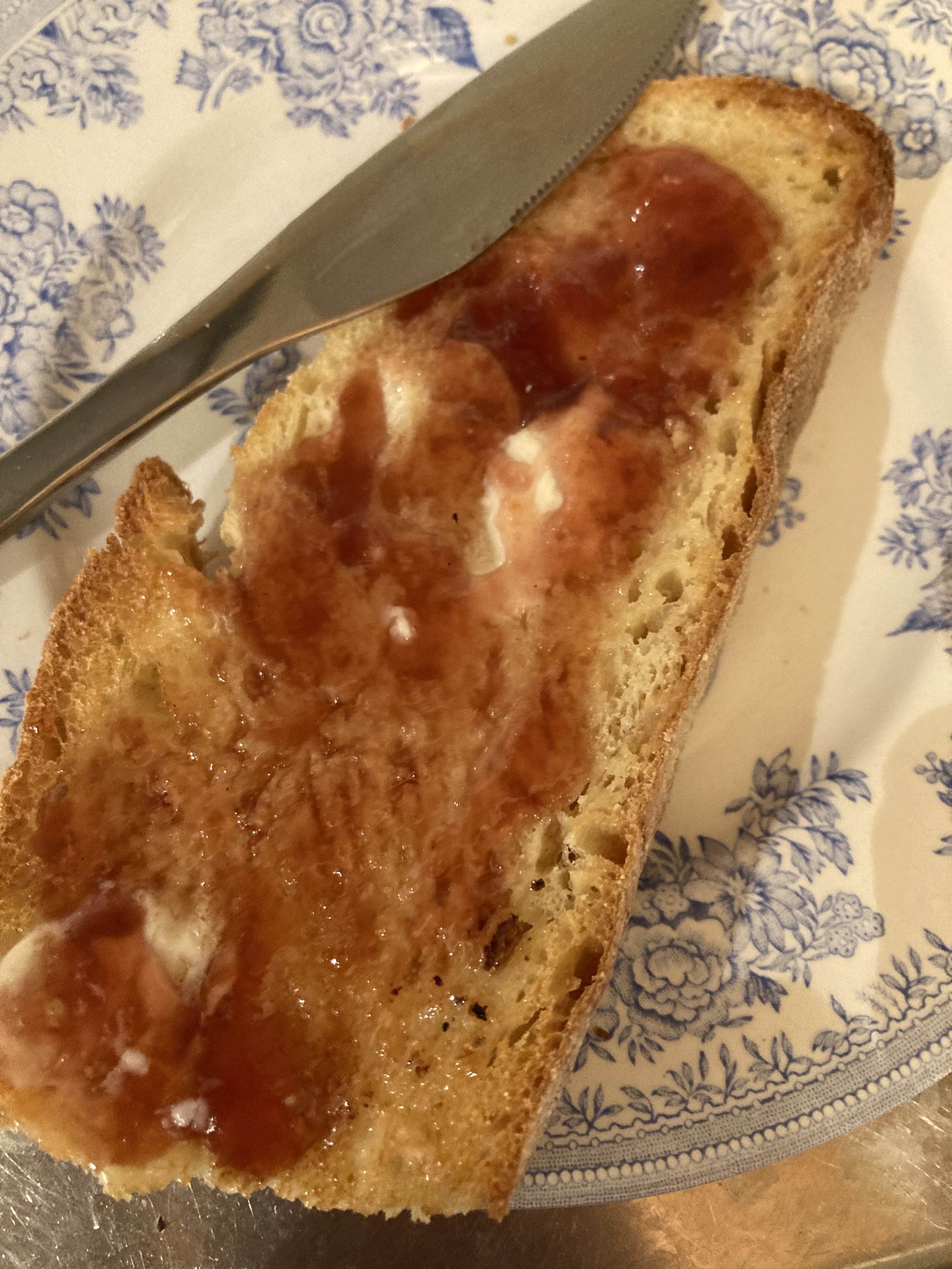Making Necci At The Olive Press Kitchen
Fall is chestnut season. The leaves and the round stone disks above can be used to turn chestnut flour into rustic crepe-like necci.
Roasting chestnuts at the fall festival in Colognora di Pescaglia
Fall is chestnut season here in Tuscany. Any day now the scent of roasting chestnuts will fill the air. When that happens, necci are sure to follow. Necci, essentially chestnut flour pancakes, were once a staple in the kitchens of the Tuscan countryside Only 3 ingredients are needed to make the batter – chestnut flour, a pinch of salt, and some water. They are a classic example of cucina povera, dishes made from ingredients readily available in times of scarcity. In Tuscany, the abundance of chestnut trees supplied many essentials to people who might otherwise have gone without – wood for heating, charcoal for cooking, and chestnuts to roast, dry, or grind into flour. That flour is the basis for necci.
I was introduced to necci (necci is plural, the singular form is neccio) years ago at a local fall food festival where the batter was ladled onto long-handled, flat, metal paddles and cooked quickly over a gas flame. Hot off the paddle, and naturally a little sweet, they were heavenly rolled around a filling of fresh ricotta cheese with a drizzle with honey.
Testi - stones that are heated to cook necci the rustic way
Necci were made differently in times past. I first learned about the old method when visiting the Chestnut Museum in the tiny village of Colognora di Pescaglia years ago. In the museum a stack of round stone disks, called testi, sat beside an open fireplace. The museum guide explained that the testi were used to cook necci long before the metal paddles came into use. But just exactly how that worked was not entirely clear to me.
Fast forward to last year when I took a cooking class with chef Giuseppe Mazzocchi at The Olive Press Kitchen in the hills near Montecatini. The kitchen there has a large open fireplace; sitting beside it was a stack of testi. Necci were not on the class menu that day, but Giuseppe promised that in the fall he would teach me the old way of cooking necci.
A week or so ago a few friends and I headed to Guiseppe’s kitchen, in the building that once housed his grandparents’ olive mill, to make necci the rustic way, just as his grandparents and their neighbors did a generation or two ago. In additional to flour, salt, and water to make the batter, we used chestnut leaves, the stone testi, and a hot fire.
The dry chestnut leaves, collected from property around the mill, were soaked in water to make them pliable. While they were soaking, the stone testi were placed on a rack above the fire in the kitchen’s beautiful open fireplace.
Heating the testi to prepare them to cook the necci
Once heated, the layering began. First, a hot stone. Next, a layer of wet chestnut leaves. On top, a scoop of batter (not too much, the necci should be thin. It takes some practice to get this just right). More leaves go on top of the batter. Next, another stone.
We repeated the layering until we had a tower of stones 6 or 8 high. The heat from the stones cooked the necci as they sat close to, but not above, the fire (I’ve posted a short video of the process on Instagram two_parts_italy). It didn’t take long for the necci to be ready – but between our chatting, sipping prosecco, and having a wonderful lunch, I admit I lost track of the exact timing.
The necci became our after-lunch treat. As we pulled the stacks of stone apart, the chestnut leaves left their imprint on each neccio – making them look as beautiful as they smelled. Filled with the traditional filling of ricotta and a little honey, they made a perfect ending to the meal – an autumn delicacy infused with the flavors of the past.
I can’t thank Giuseppe enough for hosting us and patiently teaching us the rustic method of necci making. For me, it was the perfect combination of history, cooking, friends around the fireplace, and the start of the fall season.
Olive Press Kitchen contact info: website: theolivepresskitchen.com email: info@theolivepresskitchen.com phone/WhatsApp. +39 329 743 3364
It’s always a pleasure to spend a day at Il Molino - the historic mill that houses The Olive Press Kitchen - where the welcome is warm and the scenery spectacular.
